#I promise my posts are good and also a valuable contribution to the half life fanbase
Explore tagged Tumblr posts
Text
what about a vortigaunt who loves rave music and the plur lifestyle? what about that huh?
6 notes
·
View notes
Text
2020 in animation - recap
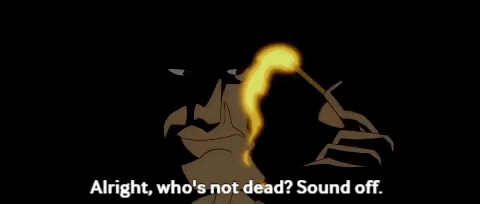
So, 2020.
Yeah, I have to say I’m not entirely satisfied. Would not recommend, 1 star.
But I would be willing to bump it to 1.5, if only because of one factor: the animation.
Because I have to say, this was the best animated end of the world so far! And if there was something that kept our spirits up, it was the cartoon industry!
Just like last year, I should preface this by saying that this is highly subjective selection. Even when one is confined to their Hobbit holes for better part of the year because of *waves hands* everything around,
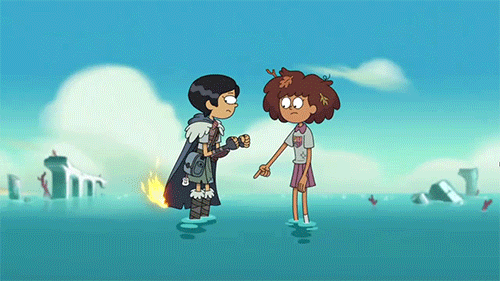
day still only has 24 hours, so I have missed a few shows. (I should also apologise for omitting a few major ones last year, like Milo Murphy’s Law S2, Ducktales, or She-Ra. This is why I started keeping a track this year). I’m sure I will catch up with those I missed this year some time in the future, but for now, let’s see what this year has gifted us with.
And right from the start, January opens the race with very interesting propositions. We were still riding on an incredibly high wave from last year, with Infinity Train season 2.

This one focused on Tulip’s mirror, and pushed the season towards a much darker and complex story, diving deep into one’s personal journey and identity. There were tears, math, deer, and cops being murdered. Brutally.
t was followed by two newcomers: The Owl House and first season of Kipo and The Age of the Wonderbeast. Both of them would dominate first half of the year, with The Owl House’s traditional, week-to-week airings, and Kipo's seasons appearing in June and October.
The Owl House, a strong contender in "What will be the Next Gravity Falls?" contest, invited us to a world full of magic, mystery, elongated owl demons and some dark secrets. It has also created a milestone for Disney, introducing an LGBT couple with characters of bisexual Luz Noceda and lesbian Amity Blight. Their Grom dance has risen to the top of my animates scenes, polling very closely to the unforgettable Kataango.
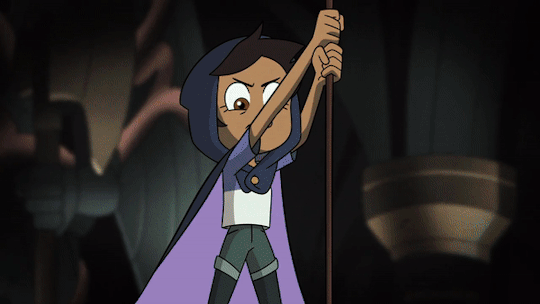
On the other hand, Kipo has taken us to the post-apocalyptic world filled with mutant animals, revealing that despite the end of the world, our old vices and animosities have survived in underground burrows, and we have infected the overworld of giant doggos and suit-wearing frogs with them.
Kipo did not pull any punches regarding commentary about our society, at the same time giving us hope in the form of the main protagonist, who was able to spread friendship and understanding amongst the mutes, as well as the humans that had to survive. And in the world that we have found ourselves in, it was a pretty darn good lesson.
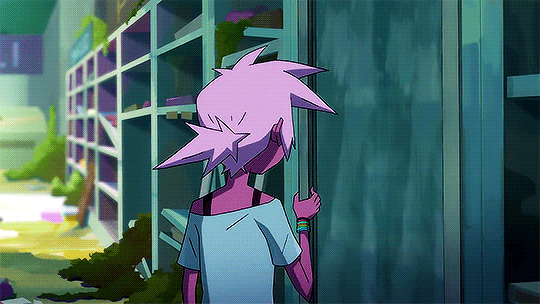
February would bring end to two seasons of airing cartoons, Big Hero Six season 2 and Miraculous season 3, as well as another newcomer that won the hearts of fans: Glitch Techs, with its "second" season arriving in August. And while in my opinion he show wasn't as good as the other two new titles, I am clearly in minority, as the show about Ghostbuters-like team of game console technicians gained huge popularity... though not enough to keep the show afloat. As of writing this, it is currently in limbo, which is a shame, as the second set of 10 episodes finally added some much needed ongoing story.
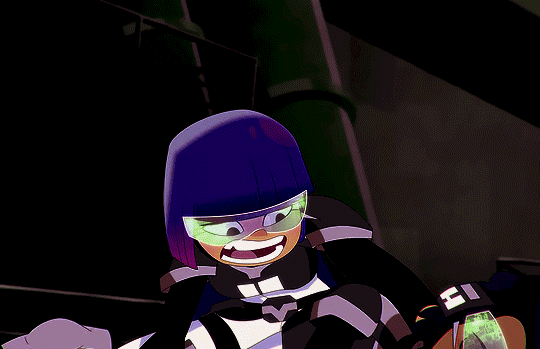
in March, another show from last year ended - Steven Universe Future. As we have expected, it tackled slightly more mature themes, showing how much Steven needed that therapy we have wished him, telling an important tale of finding one's worth and one's self. its ending might not have been as explosive as those of the original show, or the movie, but it left Steven’s story as open as an open road, and deep in our hearts, we all knew it would look like this.
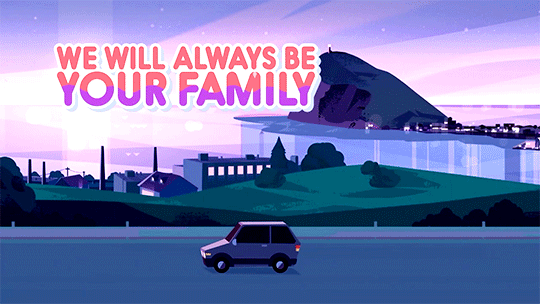
March was also the time when majority of western world caught the coronavirus, and that caused quite a turmoil with the movie and animation industry. One of the first victim of changed schedule was Disney's Onward, which was released on-line on Disney+ quickly after its theatrical release.
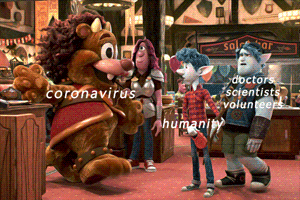
I have mixed feelings towards “Onward”. For such interesting promise, I think it made a few questionable and down right boring turns, though the unorthodox message at the end of it was its strongest point, and it was one I haven’t seen in a while, so it was worth watching just for that.
April was relatively quiet (aside from more end of the world stuff); brought us third season of Ducktales that spread throughout the year, while May gave us final, fifth season of She-Ra and the Princesses of Power.
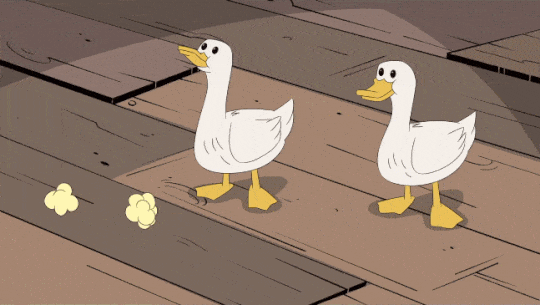
To my eternal shame, I missed on this show when it premiered, and due to the lockdown, I binge-watched the previous four right in time for powerful and explosive season 5. And even though Catra and Adora finally gave us exactly what we needed, some fans felt slightly unsatisfied, calling for a movie, like the Steven Universe one to be made. And I’d be all for it, the rest of universe needs saving from the Horde! Also, cats in space - hilarious.

May also revealed a new player on the streaming field: HBO Max, who surprised us with new Looney Tunes Cartoons, much more in the spirit of the legendary originals than the often-criticised Looney Tunes Show from 2011-2014. And in my opinion, it did; one could feel the same fluidity in animation, dedication to slapstick, and synchronisation with music than in the very first cartoons with Bugs and Daffy.
HBO Max would, however, return in June with first of series of Adventure Time original movies called "Distant Lands". The first centred around BMO, with second one - Obsidian giving us a glimpse into Bonnibel and Marceline's lives.
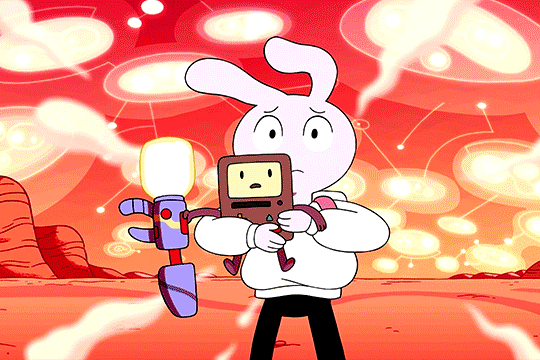
Distant Lands allowed people to revisit the odd, odd world of Ooo and learn about its colourful inhabitants, taking turns to seeing their past and the future, an, as usual, showing us that post-apocalyptic world can teach us valuable and meaningful lessons.
Just in time for full lockdown in our burrows, aforementioned Kipo season 2 premiered in June, together with another cartoon movie, this time featuring We Bare Bears. While their movie wasn't anything to write songs about, it was exactly like the show, providing some wholesome content right when we needed it.

And just in case you needed more wholesome adventures, Craig of the Creek's second season ended, and its third season began, reminding us of HOW COOL LIFE WAS WHEN OUTERNET WASN’T SCARY AND WE COULD STILL WALK OUTSIDE FOR FUN AND NOT TO HUNT TOILET PAPER.
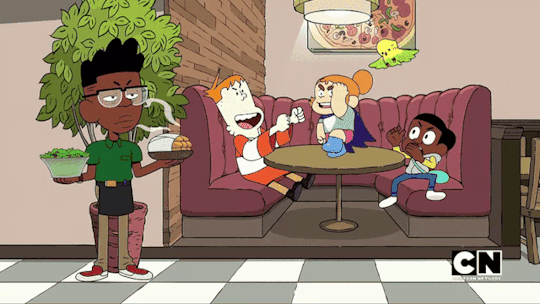
Just like last year, July was not dogs' days, but frogs'. Amphibia season 2 started raining on our heads, but unlike last year, its schedule wasn't a daily one, spreading the episodes throughout the Summer and early Autumn, with its second part arriving in February of 2021. There were more roadtrips, more mysteries and MORE MARCY.
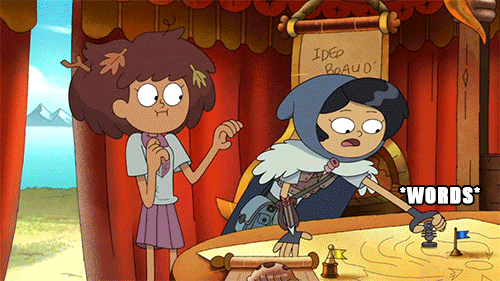
August was equally strong: aforementioned Glitch Techs "season 2" premiered, offering better and more plot-heavy episodes than the first ten episodes. Unfortunately, the show's future is unclear; the uneven divide of plot between the seasons probably contributed to the show not being renewed. 10 new episodes apparently are written, but await in sleep mode, until Nickelodeon remembers about it.
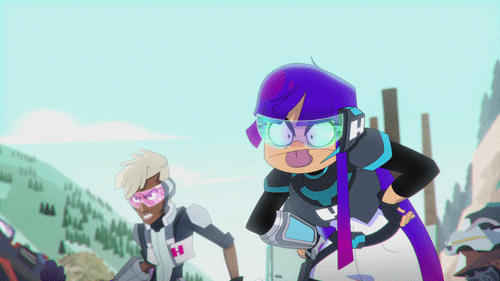
HBO MAX picked up Infinity Train for its third season, after being derailed by Cartoon Network. And if you thought that killing a mirror cop was shocking... then this season has pushed the limit of what can be shown in modern children's cartoon to a frightening degree. The schedule was once again, weirder, with first five episodes airing on the day of the premiere, ending with a cliffhanger (literally) that only contributed to the shock factor and made us wait anxiously for its conclusion. It was bold, it was dark, it was memorable.

And just like Glitch Techs, Infinity Train waits on a side track, unsure if it will be picked up, or will it be abandoned and left as a canvas for graffiti artists.
However, to end the Summer, a truly amazing TV movie has arrived on Disney Plus, where we came back to good, old Danville and could witness Candace against the universe. The new Phineas and Ferb movie brought back the glorious memories of this fantastic show, with the same humour, writing, abundance of catchy songs and a surprisingly deep moral.
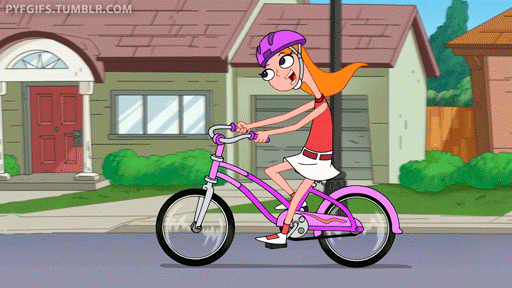
In September we have seen the start of Big Hero 6 season 3 and a odd change of format. Instead of standalone 22-minute episodes, the show now consists of two 11-minute segments. In opinion of many, this weakened the stories, forcing them to be more comedy-oriented, and shortening the potential emotional drama. Still, it gave us funny, short stories, but they did clash with the two previous season, not to mention the movie.

However, if that wasn't up to your taste, Ducktales season 3 also started airing, and continued its first part up until December with more action- and plot-driven episodes, including the Darkwing Duck crossover, serving as a pilot of the spin-off.
Later in December fans have learned that Season 3 will be its last, which broke the hearts of many duck fans; however, it seems that the season has been written as the last one in mind, and the news of the ending was known to the creators, which gives us hope for a kick-ass finale somewhere in 2021.
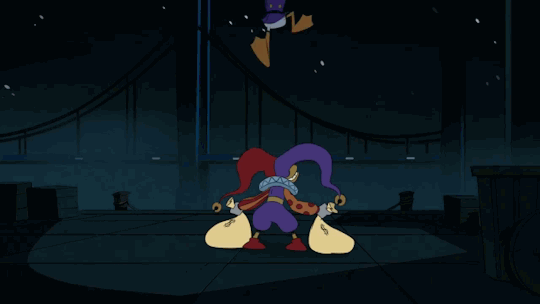
Miraculous New York, telling arguably one of the most mature storylines, opened the "Heroez" world to some new characters and new opportunities, with two more specials, taking place in Shanghai and Brazil, meant to air somewhere next year. AND I DO HOPE WE WILL SEE MORE LOCAL FOOD VENDOR SUPERHEROES LIKE HOT DOG DAN.
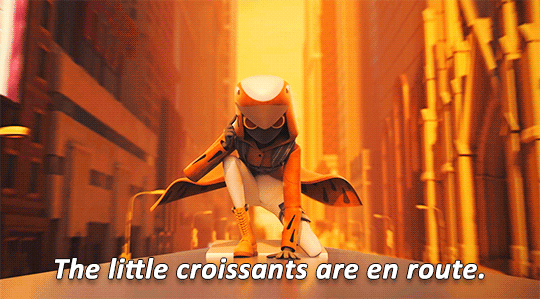
October was the month of two season 3's: Carmen Sandiego and Kipo. In case of Carmen, as it is usual with Netflix, the "season" was only a half-one, with just a handful standalone episodes, and just a dash of more ongoing plot.
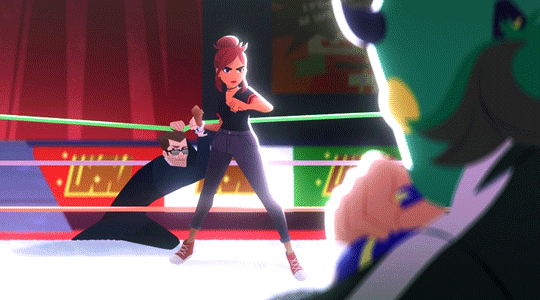
For Kipo, however, season 3 was the end, and what a glorious one it was. Fans were saddened to learn of it, but Kipo was always imagined as a 3-part story, and it showed. The finale proved more than satisfying ending to the plot, elevating Kipo to one of the smartest cartoon characters we should all try to aspire to.
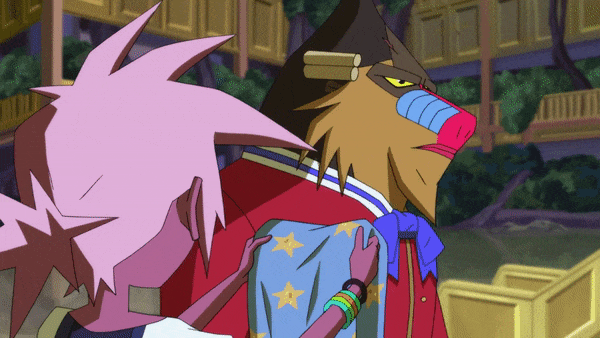
In November, Distant Lands: Obsidian aired, focusing on everyone’s favourite candy/vampire couple, and the long and complicated love between Bonnibel and Marceline. And as usual, it showed us that relationships are not always as straightforward as we would like them to be, but with enough music and teamwork, no enemy is big enough.
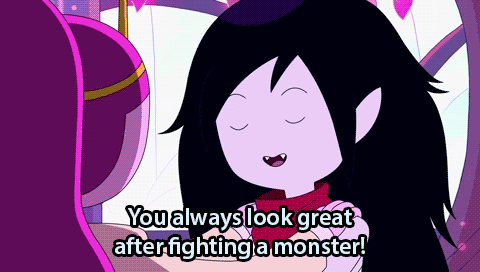
For the next new show, I’ve waited with the most amount of excitement and anxiety. Because while I was completely fine with other reboots and re-imaginings to take creative takes, new Animaniacs, (airing on Hulu) had to be perfect and had to be the lightning that struck twice.
And sadly... it wasn’t. It was still good, but some people criticised (incorrectly imho) the amount of political topics, while I mourned almost total cast-ration of additional characters, aside from Pinky and the Brain. This truly weakened the possibilities it could have had. It was still very good, but you can feel that some of the original charm was lost, due to these odd, odd limitations.
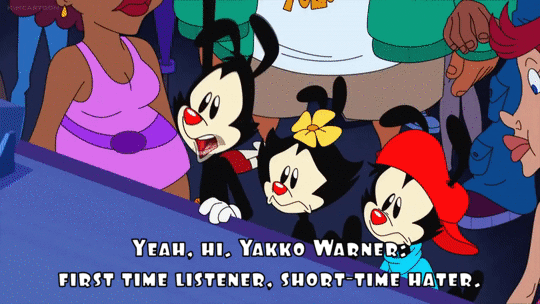
December brought us a new original Apple TV movie, Wolfwalkers. A beautifully animated folk tale of friendship and social divides, and how short-sight can cause the collapse of both arguing sides, reminding me very much of the intelligence and heart of original “How to Train Your Dragon”.

We’ve had to wait two years for the return of arguably one of the most wholesome shows out there: Hilda. Second season dived into deeper mysteries that permeate the rich and colourful troll-ridden land, we saw the return of some familiar characters, and introduced a whole new storyline, that ended with a surprising cliffhanger. Still as wholesome, but now with a tiny bit of Police incompetence. Also Twig, lots of Twig.
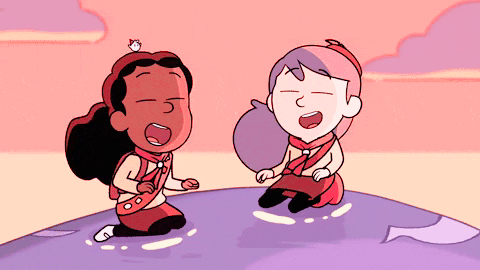
Just like Onward, Pixar’s highly anticipated Soul aired on Disney+, telling a very mature story about finding one’s purpose in life, what that purpose actually means, and whether it exists at all. Beautifully animated, with fantastic soundtrack, it was a stunning tribute to creativity, and it never dumbed down its profound, open message about following your dream.
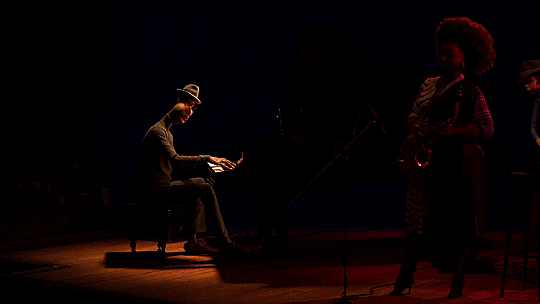
And just if you thought that Soul was going to be 2020′s last note (pun very much intended), right before the year ended, DC Super Hero Girls concluded its first season on a rather anti-climactic two-parter. That being said, the season, running from March of last year, was packed with short, bite-sized, funny stories, taking interesting spins on existing comic book characters. For a comic book noob like me, it was perfectly fine, and I can’t wait for the second season next year.
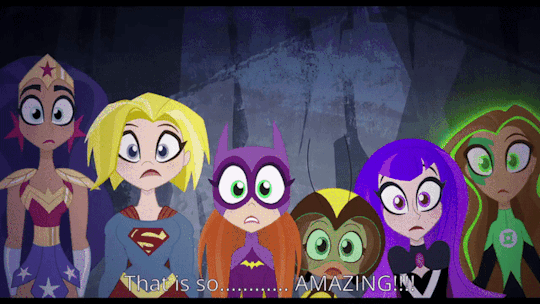
And so, we have reached the series finale of humanity.
2020 ends in just under a day. What will 2021 bring us? I do not know, and if the animated shows of this year have taught me anything, is that the future is an always open book, full of worries and challenges, but also opportunities and possibilities.
...
And in reality I was too lazy to check any news sites about upcoming projects.
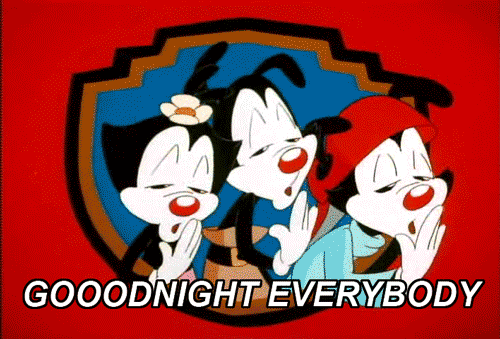
#infinity train#glitch techs#amphibia#kipo and the age of wonderbeasts#animaniacs#carmen sandiego#hilda#DuckTales#big hero 6#distant lands#dc super hero girls#Miraculous Ladybug#spop#The Owl House
278 notes
·
View notes
Text
Passion
Chapter 1 of 2
Summary: An old photo in Patton's room brings up new questions for Virgil. Who was Passion? Why had he never heard of him? Where is he now?
...Can Sides die?
Author’s Note: Wow, I haven’t posted any writing on here forever. I really should get back into doing that. Anyway, I know the summary is vague, but I promise it’s for a good reason ;) Don’t want to spoil anyone.
Cleaning Patton’s room seemed like an impossible task.
Every side seemed to be covered in different toys, pages, and countless knick knacks that seemed utterly unorganizable. There was almost no common theme to be found that would lend itself to creating a semi coherent living space.
Now, it may have been possible if you were to throw out some of the more obscure items, or maybe even move them to a different place where they wouldn’t get in the way so much, but no. Patton wouldn’t dare parting with even one of his treasures, so organization it was.
And who worse to recruit than Virgil?
“Thanks for helping me out, kiddo! Just let me know if you ever get overwhelmed and we can take a break.” Patton flashed Virgil a smile.
“No problem, Dad.” There was no possible way Virgil would ever deny a request from Patton, even if his room did make him slightly uncomfortable from time to time. So here he was spending his valuable time helping him with this impossible mess.
They figured the best course of option seemed to just be picking a corner and begin cleaning it out in the hopes of actually making a dent, so Virgil went to the far left corner as Patton began working on the right.
There were a lot of very peculiar items stashed there, from memories of high school crushes to childhood toys that broke the instant they were played with. Some of it even managed to bring a half smile to Virgil’s face rather than a grimace.
It took a good half an hour of work on his corner before things finally seemed to get slightly more presentable, and a half an hour before he came across a picture frame.
That in and of itself wasn’t weird. Patton had tons of pictures scattered across his room, hidden in every nook and cranny. What was odd was the person in the photo.
He looked like a young Thomas, just barely on the cusp of middle school. He wore a thick scarf and glasses, a book and pen in hand. His eyes almost gleamed with interest despite looking caught off guard in the photograph.
“Uh… Patton? What is this?” Virgil asked.
Patton hummed in question, popping his head out from his corner of the room- which looked a lot less clean than Virgil’s. He’d probably just spent the whole time reminiscing rather than cleaning.
Virgil held up the frame, waving it in lieu of answering. Patton managed to catch a glimpse and gasped, running over.
“Oh my gosh, I thought we didn’t have photos of him anymore!” Patton took the picture frame reverently, holding it close and absorbing every detail of it. He held it so close to his face that Virgil wondered how he was even seeing the whole picture.
“Who is it?” He asked after a few awkward seconds of letting Patton quietly gush over the photo.
Patton blinked. “Oh, I forgot you weren’t around when he was! He’s Passion. His name was Pasha.” He held out the photo between them, letting Virgil see it again.
“Passion?”
“He was Thomas’ interests as a kid. His hobbies, his dreams. He was my best friend back when Thomas was ten years old,” Patton clarified, a wistful tone to his voice.
Virgil bit his lip. “What… what happened to him?” Clearly he wasn’t around anymore. Virgil would have seen him, someone would have mentioned him, something would have come up. Instead this was the first time he was even hearing anything about a Passion. It sounded more like Roman than anything, but that wasn’t right, was it?
Patton became oddly silent at Virgil’s question, staring at the photo with a touch more sadness.
“It isn’t my place to say,” Patton finally settled on saying.
“Whose would it be?” Virgil asked.
“Logan or Roman. They know more than I do.”
A thousand thoughts raced through Virgil’s mind. Logan and Roman weren’t around when Thomas was ten. How would either of them know what had happened?
“Well kiddo, I think we should call it a day. I’m… I just want to be here for a bit.”
“Patton…” Virgil trailed off. “Are you…?”
“I’m fine. Just thinking. It’s always good to get the emotions out, right?” Tears glistened in his eyes. “Thanks for helping me clean, really. And thanks for finding this picture.” He flashed the anxious side a real smile despite the tears trailing down his face.
“No problem padre…”
----
In the beginning it was just Morality. Just Thomas’ emotions getting him through life day by day. There wasn’t a need for anything else. When you’re a baby, things are relatively simple.
It’s when you get older that things become a lot more complicated.
Passion came into existence when Thomas began to explore. He was a little four year old still trying to find his way, but he did have interests, favorite things, goals that weren’t all emotional. Passion was there to fill that gap for Morality.
It was a shock when he first popped up. Morality had no idea that there could even be other sides, so seeing Passion suddenly appear with his scarf and glasses in the mind palace one day nearly sent Morality into a tissy. They quickly figured it out, though. They were sides, and they were parts of Thomas. There was no reason to be afraid of each other.
They ended up making a pact to stick together throughout those formative years. They worked to fend off the emerging dark sides, doing their best to make sure that Thomas wouldn’t fall prey to that kind of thinking. It didn’t always work, but it was enough.
They saw Thomas grow up. No other light sides appeared, but that was fine. They were content just being with each other.
----
“Logan… Can sides die?” Virgil asked, seemingly out of nowhere.
Logan almost dropped the book he was reading, completely caught off guard. Virgil didn’t blame him. There they were, sitting in the living room having a nice quiet time together, and the anxious side just decided to drop one hell of a bombshell.
“I… why would you like to know?” Logan asked, befuddlement clear in his voice.
“Just wondering.” Virgil shrugged. He decided that he wasn’t going to bring up Passion. Clearly with the reaction Patton gave it was a sore subject, and he didn’t want to cause more harm just because he was curious. He figured he’d just skirt around the issue with Logan and try to suss out an answer without actually mentioning it. Maybe that’d stop all Virgil’s dwelling and let him focus on more important things.
...It was wishful thinking, but Virgil would bank on it anyway.
“Well… I suppose it is possible…” Logan said very carefully. He sounded like he was treading on very thin ice, not about to lie, but also not wanting to say anything that could cause a negative reaction.
“How would that… hypothetically happen?”
“Virgil, are you okay?” Logan asked, cutting the conversation off.
“I am- really!” Virgil quickly defended. “I’m just curious. I’ve never heard of sides disappearing, but it’s gotta be possible right? If Thomas doesn’t need one anymore?”
“I highly doubt Thomas wouldn’t need one of his core personality traits. Even the dark sides are needed, despite everything negative they contribute. They still have some good, and Thomas still can use their words to his benefit.” He sighed, looking put out. “Are you worried that Thomas doesn’t need his anxiety anymore? Because I’m pretty sure we already went over this when you ducked out.”
“No, I know Thomas needs me, don’t worry. I learned my lesson there. I was really just curious, I swear.” Virgil really hoped he wasn’t digging himself into a hole. “But you never answered my question. Is it possible?”
Logan bit his lip, looking down at his book and back up to the other side. “Yes. I suppose it is. If, hypothetically, a side’s job could be taken by another side, then that side would no longer be needed- but that is a highly improbable scenario. There is no reason that would happen, especially because Thomas is a grown adult. His personality has been solidified by now.”
But it hadn’t been in the past. That meant it was still possible then. Logan clearly didn’t know of anything like that happening, but he also wasn’t there until Thomas was twelve years old. Maybe something happened to Passion before he was around, so he wasn’t aware?
But who would take up Passion’s spot? Unless…
Roman.
Roman was passionate. He was creative. He was the source of Thomas’ hopes and dreams.
It made perfect sense.
Oh god, Roman killed another side. Maybe not intentionally, but he took their job. That’s why Patton was so upset, but didn’t want to show it. He was afraid of hurting Roman's feelings.
Virgil stood up quickly, his chair pushed back slightly.
“Virgil?” Logan questioned.
“Sorry, I need to… go. Thanks for talking, that was really interesting,” Virgil said quickly, speeding out of the room and leaving a confounded Logan behind.
Virgil needed to talk to Roman.
Later.
After he finished processing this.
----
Morality and Passion were ten years old when they decided on names for each other. Calling each other by their titles was just too formal for them, and they came to the conclusion that they weren’t just Thomas’ morality and passion, but so much more, so they deserved a name just like him.
“I want to be Patton!” The tiny side cried out as he pointed at a name book, the name sticking out.
“Why’s that?” Passion asked inquisitively, looking at the book carefully, where the meaning of Patton was printed.
“I dunno. It just sounds nice!”
“But names have to have meaning!”
“Well Thomas’ name was picked just because his parents like it! We can do the same.” Patton pouted. “You can pick out a nice meaning for your name, but this is what I’m sticking with,” he said stubbornly.
Passion was about to protest further, but his eyes trailed a few lines up, spotting something that caught his eye. “Pasha,” he said reverently.
“Huh?”
“Pasha! That should be my name! Then we could both have names that start with P!”
“You just chose a name that sounds like Passion!” Morality accused.
“So? You said it yourself, it doesn’t have to have a big meaning. It can just be a name.” Passion crossed his arms. “This is the name I want.”
“Oh, fine. It’s nice to meet you Pasha!” Patton stuck his hand out.
“It’s nice to meet you, Patton.” Pasha shook the other’s hand, which Patton quickly turned into a hug that they stayed in for a good minute.
These were their names, and their names alone.
----
It had been a few days since Virgil talked with Logan, and still the only conclusion that he could come up with was that it was indeed Roman who had taken Passion’s place. Thomas was young and his interests were still growing and changing when Passion was still around. There was a chance that when Roman did come around, he unintentionally overstepped his role as creativity and bit off more than he needed to, rendering Passion useless.
That did seem like a very Roman thing to do. Not intentionally, but he always dreamed of bigger and better things, so of course he might take the reins on things like that without even thinking about it, because it was so ingrained into his personality.
It wasn’t a one hundred percent certain theory, however. Virgil knew better than to bank on those. There could always be some different explanation that he hadn’t though of- and this was a pretty drastic theory just to be throwing around with very little evidence.
That’s why he needed to talk to Roman. Get some information out of him and figure it out for himself. He wasn’t sure what he’d do with the information, but he just needed to know it to ease his mind. He’d figure it out later.
“Roman.” Virgil flopped over the creative sides’ bed, his hair falling over his face.
“Yes, My Chemically Imbalanced Romance?” Roman jibed. He was sitting at his own desk, brainstorming ideas idly. Virgil liked to sit in on these sessions, reminded of the days back when he and Roman worked together to create edgy poems and the like for Thomas. Even if he didn’t really contribute anything anymore, it was still nice to listen to the embodiment of creativity spitting out ideas and eventually hitting that one perfect one he was positive would work.
“I was wondering… You’re not just creativity, right?”
Roman shot him a confused glance. “Well, a-doy. Just like you’re not just anxiety, you’re also self preservation . Hell, I even introduced myself as the fanciful side the first few Sanders Sides episodes! What kind of a question was that?”
Alright, it was a stupid question. Virgil just didn’t know how to casually bring it up otherwise! That was the only way he could think of that could maybe naturally work.
“I was just wondering,” Virgil mumbled. “So what other traits would you describe yourself as?”
Roman frowned. “Are you having an existential crisis, Virgil? Because I can tell you that you are so much more than you give yourself credit for. You’re self preservation, caution, fear, that voice of reason in Thomas’ head. You give us all a reality check when we need it.”
Geez, did everyone think that Virgil always needed a pep talk? He should really tell them to cool it. He wasn’t always on the brink of sinking out again, he was just in a bad place that one time- but things were different now. He was a different side now.
He guessed it just took time for the others to realize this. So now he just had to deal with the constant reassurance and slight babying, even when he was trying to do this for everyone else.
Okay, maybe not everyone else, but still just in an effort to sate his own curiosity.
“No, Roman, I’m fine. Just curious. What would you describe yourself as?”
Roman looked like he wanted to protest more, but decided against it, instead tapping his chin with a finger. “Hmm, well, that’s a tough one. I suppose I’d be creativity, dreams, ambition, talent, those kinds of things.” Roman perked up for a second “Oh! And I can’t forgot passion! I’m-”
The rest of Roman’s words were drowned out by Virgil’s mind.
There is was, straight from the horse’s mouth. He was passion.
Roman had to have taken over Passion’s role, killing him. He was the reason why Patton was crying in his room.
And Virgil couldn’t even blame Roman. Roman was just naturally passionate. He was always driven, always pursuing new things, and there was no doubt that he was just like that when he first came into being. He would never have done that to another side intentionally, but it’s not like it was something he could control. Roman was just the natural evolution from Thomas’ passions as a young kid to his hobbies as a teenager.
The rest of the conversation with Roman was a blur in Virgil’s mind, but he eventually got out of his room and into his own, left with a cacophony of thoughts and no way to organize them.
----
Pasha and Patton were only ten years old, but they were aware of things like relationships. Sure, they may not be old enough to get all the logistics of it, but they knew the basics: people that were together held hands and did things together and were happy.
Patton already had two of those things with Pasha, so he figured why not try holding hands with him? Then they could be together like their parents!
It was a perfectly logical conclusion in the moral side’s mind. He loved Pasha, and Pasha loved him, so obviously they should be in a relationship.
“Pasha! Hold my hand!” Patton cried as he raced into the side’s bedroom.
“What?” The passionate side poked his head up from a children’s book, confusion written over his face.
“You should hold my hand, and then you can be my boyfriend!”
“You… want to be my boyfriend?” Pasha blushed, putting his book down on his lap.
“Yes! That’s what everyone does when they’re close friends! They hold hands, and then they are a couple! We already hang out and are best friends, so why shouldn’t we be boyfriends!”
“That.. does make sense,” Pasha said, a tone of contemplation in his voice. “But would you really want to be my boyfriend? I… I’m sure there’s someone better.”
“We’re the only two good sides! Besides, even if there were others, I’d still like to be with you! You’re funny and kind and passionate about so many things! Do… do you want to be my boyfriend?” Patton’s voice got a tad smaller at that last question, a bit of fear worming its way into his gut.
“I… Of course, Patton. I’d love to hold your hand.”
A large grin spread across the moral side’s face, and he quickly rushed over to Pasha’s bedside, grabbing his hand. It was a bit clumsy at first as he tried to figure out the best way to fit their hands together, but they worked it out quickly.
A blush spread on both of their cheeks, but they wouldn’t have it any other way.
----
The next day when Virgil walked into the living room, he was met with three identical faces all looking at him with a variety of different expressions, concern being the most obvious.
“Virgil, we’re… worried about you,” Roman started.
“What?” Virgil blinked.
“You’ve been asking some odd questions lately, and we were just afraid that you might still feel out of place here- or perhaps that some worries are plaguing you still and you need to have someone help you work through them,” Roman clarified. “There’s no shame in asking for help. We’re all here for you.”
“What are you talking about? I’m fine.” The anxious side crossed his arms, narrowing his eyes at everyone.
“Virgil, you asked Logan about death, and then asked me about what you thought your purpose was here. It sounds like you are still struggling to find your place in our group, and wondering if you are still useful- which of course you are-” Roman quickly affirmed. “You know you’re part of the family.”
“Of course I know that.” Virgil scuffed his shoe on the ground. “I told you, I wasn’t asking about that stuff because of me. I was just curious. Not everything I ask has to revolve around me. There’s just a lot of stuff that I still don’t know here.”
Logan frowned. “Well, usually curiosity occurs from something happening to spark the idea. It is not a far leap to assume you are currently thinking about these types of things and are wondering about what we know. It’s okay-”
“I’m just trying to find out about Passion!” Virgil cut him off, too annoyed at the barrage of misunderstandings to think through his words.
Everyone in the room froze up.
“How… How did you learn that name?” Logan asked slowly.
“That’s my fault, kiddo,” Patton spoke up softly, speaking up for the first time since the invention began. “We were cleaning out my room a week ago, and he found a photo. I… I didn’t realize. I’m sorry, kiddo.”
Virgil rubbed his arm self consciously. “It’s fine, Pat. I was just wondering what happened. You told me to ask Logan and Roman, but… I didn’t want to hurt them like you clearly were when it was brought up. I was trying to be discreet.”
“Pat, you were hurt?” Roman’s head whipped over to the fatherly side, concern obvious on every inch of his face. “Whatever for?”
“I… I just missed Pasha, that’s all. Nothing to worry about. I know that I shouldn’t be afraid of letting my emotions out anymore, so I just let myself miss him. It’s okay.”
Roman put a hand on Patton’s shoulder. “It’s okay, Patton. I’m sorry. It’s okay to miss him.”
“I suppose we owe you an apology, Virgil,” Logan said after a minute. “I did not think that you knew about Passion, so I did not make the connection, and instead jumped to a false conclusion. I apologize.”
“It’s no big deal. I was just wondering.” Virgil shrugged. If he knew that asking about Passion would have caused this mess, he would have just kept his curiosity to himself. Everyone staring at him now was just making him even more anxious.
“Well, I suppose we owe you an explanation now,” Roman spoke, still patting Patton on the back and shooting Logan a look. The logical side nodded back.
“It’s alright, you don’t have to explain it to me. I figured it out myself,” Virgil said with a sigh.
“You did?” Logan asked incredulously.
“Yeah. You said that sides can only die if their role was taken over by another side. Roman appeared when Thomas was eleven, and when I showed up around twelve, Passion wasn’t there. I figured that Roman took over Passion’s role, and that’s why he’s gone now. I don’t blame you, and I’m sorry for pushing.”
Logan and Roman both shot each other a look. “Virgil… That’s not exactly true.”
“What?” Virgil blinked. “But you told me that that was the only way sides could die.”
“Passion didn’t die, Virgil,” Patton spoke up, his voice soft. “He’s still here.”
“I… I don’t understand. You were mourning him. How is he still here? What do you mean?”
“Let me tell you a story, Virgil…”
----
“Hey Pash, what’s wrong?” Patton poked his head into the dining room. The eleven year old was sitting at the table, a contemplative frown on his face.
“I don’t know.”
“How can you not know what’s wrong?” Patton walked over the the side, sitting on the chair next to him and leaning close.
“I don’t know!” Pasha cried out, throwing the pencil in his hand down with a dull clunk. “It just doesn’t make sense! Thomas’ teacher wants him to do a writing assignment, and I want to do it, but I also don’t want to!”
“Why don’t you want to?” Patton grabbed one of his boyfriend’s hands, trying to physically reassure him. Seeing his boyfriend in any kind of hurt was always heartwrenching.
“His teacher wants us to do this writing about these silly things, and it just seems stupid to me! Like, I want to, but it’s a waste of our time!”
“Oh Pasha… Nothing is a waste of time if you have fun doing it.”
“But we could be doing better things!”
“Pash, you never know if something will be worth doing if you never try it.”
“I just think we should be doing more… concrete things. Like working on math, or history! Not spending time writing stories. They do nothing to help us.”
“But they’re fun! Our time together doesn’t really do much, but we still hang out and enjoy it!”
“I guess…” Pasha trailed off.
“Come on, let’s just do something fun now and take your mind off this. We can always come back later.”
“Alright. Thanks, Pat.”
“No problem.” Patton flashed his boyfriend a large smile. “That’s what I’m here for!”
“But what am I here for?” Passion mumbled under his breath, too low for the other side to hear.
----
Something wasn’t right.
Patton could feel it. Thomas’ mindscape felt weird, like there was something invariably wrong. His first thought was Passion. He had been acting weird lately, but surely he couldn’t be causing this… wrongness? Pasha would never do something like that. Dark sides did that, not Passion.
Patton slipped out of his room, taking small steps over to their living room where he could hear sound. It felt wrong.
“-isn’t right! Doing theatre would take up too much time! We would barely be able to get out homework done!” Pasha was pacing around the room, looking at the floor and ranting to himself. A roiling feeling boiled up in Patton’s gut. “But this would make Thomas happy! I should be letting him pursue his dreams! But not at the expense of school! School is more important than some hobby that he probably won’t care about in a year. School will lead us to more substantial hobbies!”
“Pasha…?” Patton questioned.
He didn’t hear him.
“But what if he likes theatre? What if he wants to continue it? What if he gets a major role? He wouldn’t be able to do anything else! I can’t leave all our other passions behind just for this one! What about astrology? Math? Those are so much more viable career options! I know we should be enjoying our youth, but we have to think about things like this! We can’t waste our time doing theatre!”
“But what about what Thomas wants?”
“We are Thomas! We know what’s best for him!”
“No, we’re his sides! He’s still his own person who can make his own decisions!”
“But I’m still his passion! I know about things like this!”
“And I know that this will make him happy!”
He was arguing with himself. He wasn’t even being discreet about it, he was just literally talking back and forth with himself like he was two different people.
This had been happening a lot lately- on a lot lower level than this, but still similar. He’d argue with himself, flipping between different options and never settling on something. It was like a never ending war with himself. But never as obviously and physically split as this. Patton wanted to step in, say something to comfort his boyfriend and tell him that everything was okay, but he couldn’t. He didn’t know what to do or how to fix this. He was frozen with indecision.
“You’re not listening to me! Well you’re not listening to me! You can’t keep doing this, we’ll never get anything done! You’re the one getting into a huge argument with yourself, just choose something! But there is no right answer, it’s all subjective!”
Tears began to well up in Pasha’s eyes. He clapped his hands over his ears, trying to block out the sound that wasn’t around him. The sound that was all inside his head.
“JUST GET OUT OF MY HEAD!”
And then…
Pasha didn’t exist anymore.
Just like that, he was gone. Patton’s boyfriend wasn’t there anymore, and instead… There were two people on the floor, dazed and confused but entirely separate.
One had Pasha’s glasses. The other had his red scarf wrapped around his shoulders.
“We…” Scarf looked up at Glasses. “What?”
“This… is an unprecedented turn of events…” Glasses sputtered out.
“Pasha?” Patton whispered. It was like his entire world was breaking down. This wasn’t right. Where was Pasha? Where was the boy he grew up with? What happened?
“Patton?” Scarf spoke up, his eyes meeting Patton’s. “I… I don’t know what happened.”
“We split,” Glasses explained, sounding like he just came upon the realization himself. “We couldn’t decide which path to pursue, and we weren’t getting anywhere like that, so Thomas’ mind split us in two. So we wouldn’t be constantly fighting and could actually get something done.”
“So… who I am?” Scarf asked, fiddling with his scarf idly in his hands.
“Who do you feel like? I feel like… Logic.”
“I feel like… Creativity.”
Patton’s world shattered.
#Sanders Sides#Thomas Sanders#Roman Sanders#Virgil Sanders#Logan Sanders#Sanders Sides Fanfiction#Redrosellawriting
125 notes
·
View notes
Text
You are Wrong about Lotor
The advertisements for this season promised to blur the lines between good and evil and delivered exactly that. By the conclusion of Voltron Legendary Defender season Six our paladins have apparently killed the only true hero in this show, destroyed their only access point to unlimited clean energy, and kickstarted a civil war in the Galra Empire. Team Voltron, has become the villains.
What’s that?
Doesn’t sound like we watched the same show?
Let me explain.
The writing and framing this season were truly incredible. Meticulously calculated to provide just the right information at just the right time to draw the exact wrong conclusions. It aims to provoke a violent emotional reaction in the viewer and discourage them from thinking critically about what they’re seeing. Even better, it’s a double trick, as additionally, our protagonists in the show fall into the same trap. It’s so incredibly meta, to have your audience make the same, independent conclusion as your characters.
It’s emotional manipulation at it’s cruelest, and this is only the first of the one-two punch that’s due to land it’s second hit next season.
Because team Voltron is wrong about Lotor, and so are you.
To cut to the chase, the story the narrative wants you to conclude, is that Lotor is keeping a group of Alteans hostage to systematically drain them of quintessence for use in his experiments.
I’m going to tell you right now, that’s not what’s happening.
Romelle is either hopelessly naive or malicious: she straight up admits to only knowing parts of the truth. Suspiciously, she is the first and only person Keith and Krolia encounter, but just so happens to be the only person privy to the ‘dark secrets’ of the colony. What luck! Of course, they must avoid interacting with the other Alteans who reside in the colony, as nobody else would believe Romelle if she told them. Convenient. As far as I am concerned, everything she tells them that was not also directly witnessed by Krolia and Keith is suspect.
Speaking of, how is it, exactly, that we know Lotor is extracting quintessence from these people? Hmm? Do we have any concrete proof? No. Keith jumps to conclusions. Keith shoots first and asks questions later.
Upon discovering the emaciated Alteans in the pods Keith immediately declares that Lotor must be harvesting their quintessence. We see no actual quintessence in the lab, and by the accumulation of dust it appears that the facility has been unused for quite some time. Logically, the quintessence that the blade intercepted, and that Keith and Krolia have been seeking the source of, had to have come from somewhere, but that place isn’t this lab. But, this is no time for logic; Keith, Krolia and Romelle race off to the Castle of Lions to confront Lotor.
Sendak was absolutely correct when he said that the paladin’s greatest weakness was that they value the lives of others. Because just the suggestion that some innocent people may have lost their lives is enough to prompt the paladins to ambush someone, guns drawn, who has thus far proved himself a powerful and valuable ally. They ask Lotor exactly zero questions and don’t allow him the time to explain themselves. And it was the idea alone that caused them to act, because at no point did they seek out any proof whatsoever!
Allura alone I will grant some leeway in her reaction.
I 100% understand why Allura reacted the way she did, after all the shit she’s been through. She’s only just managed to feel that not all Galra are as monstrous as Zarkon. She’s fallen in love with his own son, and she’s hoping with everything she has that he’s really a good person. I’m sure there was still some residual fear there, it can’t have been more than two years from her perspective since everything she’s known and loved was taken from her. It takes so long to shake a trauma like she’s been through, and many people never fully do. And when she discovers that Lotor has been hiding the existence of other Alteans from her? That he admits to having to sacrifice a few? That fear and anger flared up.
It’s conspicuous, that circumstances conspire to both render Lotor unconscious and to remove him from the castle before he can explain himself. He doesn’t even hear half of the things that he’s been accused of doing and so wouldn’t know to deny them. No one ever, at any point, asks Lotor if he’s been harvesting quintessence from living Alteans. We’re left waiting to hear his side of things, and then, the next thing he says referencing Team Voltron is this:
“Zethrid, Ezor, my deepest apologies for lying to you both. But in order to gain the princess’s trust, and make the paladins of Voltron believe we were truly at odds, it had to be done.”
This comes at an interesting place in the narrative. Seemingly confirming that Lotor has been manipulating Team Voltron the whole time, and thus invalidating the sincerity of any of his prior actions since splitting from his generals. Because it follows immediately upon the horrific accusations he was denied the chance to refute it also tricks us into thinking he’s admitting to them. After all, if he’s been faking this entire time, what couldn’t he be capable of? Except. This apology is itself a lie.
In fact, regardless of whatever understanding Lotor and Axca have between them, it is impossible for them to have been working together at any point between Axca’s betrayal at Daibazaal and The Generals allying themselves with Haggar; after the point in which Allura and Team Voltron began extending some trust to Lotor. While it’s possible - even probable - that Lotor and Axca may have had contingency plans for faking a split between the generals and Lotor, and some of those plans may have included attempting an alliance with Voltron, there are far too many moving pieces for all that transpired between them to have been planned ahead of time. Far too many opportunities for one or all of them to have died. And, consistently, Lotor puts his own survival and that of his loyal allies above all other priorities.
Simply put, if the generals hadn’t been recruited by Haggar they would have been executed. If Axca was loyal to Lotor at this point she would have had no good reason to risk her life by returning to the empire, especially when Lotor had just killed Zarkon.
He says this when he does because he needs Ezor and Zethrid to not fight him over returning to the Castle of Lions. His words towards his generals, notably using ‘power’ instead of ‘peace’, are chosen to convince them to work with him again and to give the impression that he has control of the situation and a plan - which he absolutely does not.
We know this is a facade, because the moment Lotor comes face to face - or ship to lion - with Allura again he drops it and reverts to language and mannerisms he’s been using before with her. But he’s doing this openly in front of his generals and they’re visibly perplexed.
Lotor rushes back to the Castle of Lions to attempt to reason with Allura. He loves her, and he's willing to put aside his pride and plead with her in front of both of their teams. You can hear the panic in his voice as he tries to hold it together.
And then Allura accuses Lotor of being worse than Zarkon. Everything after that, isn't really him. He has a mental breakdown. He’s had every support ripped away, and 10,000 years worth of repressed pain and anguish come crashing down on him. He's lost everything that matters to him, had the one person he though he could trust, the woman he loves, accuse him of his own greatest fear, and he's hurting.
In meta about prior seasons I’ve seen it expressed that it’s a miracle that Lotor escaped his upbringing as apparently put together as he did. He’s paranoid, and occasionally willing to go against his own moral code if it means surviving another day, but surprisingly stable.
Well, it turns out he isn’t. Lotor fairly obviously has some degree of mental illness, and it unfortunately contributes to his decline in the season finale. At the risk of getting too personal in a fandom meta post, Lotor’s breakdown is eerily familiar to me - and I would expect many other fans with experience with mental health issues as well. I too have had crisis like that, complete with screaming, ranting and threatening to kill everyone who’s ever even so much as looked at you funny.
This whole situation went to hell because team Voltron has a history of making decisions based on emotions rather than logic. So far, it’s worked out pretty alright for them, but that’s about to change. They’ve lost their home, their best chance for stability and avoiding a civil war in the Galra Empire, and a loyal friend. Because they let their emotions get the best of them and couldn’t take fifteen minutes to sort out their facts from their fears.
The only negative thing. The only negative thing Lotor admits to, is that ‘many Alteans perished in [his] quest to unlock the mysteries of quintessence.’ He does not say how they died, he does not say he killed them, he doesn’t even say that their deaths were intentional. For all we know, they died in a lab accident. Those Alteans in pods? Among the many functions pods like those are established to have in VLD are healing and cryopreservation. We don’t even know that those people are the deceased Alteans in question. We don’t even know if they’re dead!
The one and only time we see the blue quintessence used as intended in show is when Lotor uses the last of his supply of it to energize his Sincline ship and attempts to pass through the gate for the first time. In response to Zethrid’s concern that this is the last of their concentrated quintessence Lotor states that once they get into the rift they will have access to an unlimited amount of it. Therefore, it stands to reason that the white quintessence found in the rift contains the same properties as the blue of unknown origin. But that the yellow and purple the Empire uses apparently does not. Lotor doesn't need the quintessence in the rift for the empire: he needs it for the Alteans. He's not manipulating anyone, his goals are the same as theirs: peace and free energy for the universe. While it’s likely the blue quintessence does have some relation to the colony, whatever that is, there is currenly no evidence whatsoever that it’s being extracted from sentient beings. He’s clearly looking for a replacement source as it is. He likely wanted to tell Allura about the Altean colony, but felt he needed to secure reliable access to the quintessence field before he could do so.
So what’s this second punch that’s going to land next season?
If you haven’t guessed already, think how this is actually going to turn out. Because we know Romelle is wrong, whether on purpose or by accident. She basically conspired to kill the man who did everything in his power to save her people and her culture. And she did so by turning his friends against him.
How are the paladins going to feel when they realize this? How is Allura going to feel? She left Lotor to die in the rift. After he begged her to see reason. After he confessed his feelings for her. After she fell in love with him.
Ultimately, despite what many people expected, and indeed what many people are saying, Lotor has never intentionally manipulated the paladins and he didn’t betray Team Voltron.
Allow me to repeat myself:
Lotor didn’t betray Team Voltron
They betrayed him.
Sincere thanks to all my fandom family in the Lotura 18+ discord. Nearly all of the conclusions reached in this meta were origionally hashed out during chat sessions. Love you all, and I hope for anyone disheartened by s6 this meta can give you a bit of hope for the future.
I sincerely believe, that when all things are said and done, Voltron: Legendary Defender is going to go down as one of the best shows ever created.
#Lotor#JusticeForLotor#voltron s6 spoilers#vld s6 spoilers#meta#long post#Allura#Keith#Romelle#Hate tries to Meta#Voltron Legendary Defender
2K notes
·
View notes
Text
Please stop telling people to “just do CBT”
CBT, like medication, can be valuable and life-changing to an individual. And like medication, it can also be devastating if it’s not the right treatment to you. It seems a lot of people seem to think that because it’s accessible and you can get free PDFs online, that it’s safe to just hop on any post and tell complete strangers to try it.
That is dangerous and irresponsible behavior.
CBT is suited to those who are having trouble specifically with their thought patterns around things that do not justify those kinds of thought patterns, to the point where it impacts their life. CBT is not suited to just anyone having problems with their mood or anxiety or their thought patterns. And yet it is frequently pushed on people by strangers, by doctors (because it is relatively quick and cheap, thanks capitalism!), even forced on patients who aren’t suited to the treatment, causing worsening situations, even trauma.
I can’t link to any of the wonderful conversations I’ve witnessed in private groups by those harmed by CBT, unfortunately. To summarise, I have seen fair comparisons to ABA, gaslighting, victim blaming, brainwashing, neglectful parenting that dismisses the feelings of the child (have fun with that one if that’s the source of your problems), grooming the patient to be receptive to coercion and institutional abuses, But from my own perspective as someone who had to stop CBT before I killed myself as a result of it, HERE is some highlights of the more damaging parts of a typical CBT workbook (and there's some great contributions in the notes). For those with issues caused by abuse or oppression or other situational factors, CBT becomes gaslighting. CBT is routinely weaponized against the oppressed and the abused, when our understandable reactions make others uncomfortable. CBT is used to make us into “good victims”, who don’t hurt or cry or complain or blame anyone. CBT is a therapy that can sever the connection between a person and themselves, it can be compassionless and cold. Not to mention that CBT inherently shifts the blame for feelings and behaviors entirely onto the individual rather than acknowledging the true role of triggers.
In addition to this, CBT and how it is implemented is not only criticized by those harmed directly by it, but by professionals too.
“this model appears to confuse the symptoms (i.e., negative self concepts) of depression with its cognitive causes... In many cases, clients' appraisals and reports of their negative or distressful experiences are quite rational, realistic, and accurate. For example, their experiences of sexual or physical abuse at the hands of another or the tragedies of their loved ones have left enormous scars in their life. In such circumstances, cognitive-restructuring exercises, with their emphasis on reframing reality and not on changing it, do not deal with the true problem... research has shown that positive self-evaluations may be dysfunctional and maladaptive... the self-focused cognitive model puts a strong emphasis on examining the association between negative thoughts and mental dysfunction, but it has not answered the question of why individuals choose to focus on their negative attributes when the positive evaluation of the self is more accurate. “
“ Opponents have frequently argued that the approach is too mechanistic and fails to address the concerns of the “whole” patient... the specific cognitive components of CBT often fail to outperform “stripped-down” versions of the treatment that contain only the more basic behavioral strategies... patients with major depression improved just as much following a treatment that contained only the behavioral strategies and explicitly excluded techniques designed to directly modify distorted cognitions... “
“Some critics argue that because CBT only addresses current problems and focuses on specific issues, it does not address the possible underlying causes of mental health conditions, such as an unhappy childhood... CBT focuses on the individual’s capacity to change themselves (their thoughts, feelings and behaviours), and does not address wider problems in systems or families that often have a significant impact on an individual’s health and wellbeing. “
“ Seek a therapy referral on the NHS today, and you’re much more likely to end up, not in anything resembling psychoanalysis, but in a short series of highly structured meetings with a CBT practitioner, or perhaps learning methods to interrupt your “catastrophising” thinking via a PowerPoint presentation, or online... CBT doesn’t exactly claim that happiness is easy, but it does imply that it’s relatively simple: your distress is caused by your irrational beliefs, and it’s within your power to seize hold of those beliefs and change them... Our conscious minds are tiny iceberg-tips on the dark ocean of the unconscious – and you can’t truly explore that ocean by means of CBT’s simple, standardised, science-tested steps... Examining scores of earlier experimental trials, two researchers from Norway concluded that its effect size – a technical measure of its usefulness – had fallen by half since 1977... For the most severely depressed, it concluded, 18 months of analysis worked far better – and with much longer-lasting effects – than “treatment as usual” on the NHS, which included some CBT. Two years after the various treatments ended, 44% of analysis patients no longer met the criteria for major depression, compared to one-tenth of the others. Around the same time, the Swedish press reported a finding from government auditors there: that a multimillion pound scheme to reorient mental healthcare towards CBT had proved completely ineffective in meeting its goals...
A few years ago, after CBT had started to dominate taxpayer-funded therapy in Britain, a woman I’ll call Rachel, from Oxfordshire, sought therapy on the NHS for depression, following the birth of her first child. She was sent first to sit through a group PowerPoint presentation, promising five steps to “improve your mood”; then she received CBT from a therapist and, in between sessions, via computer. “I don’t think anything has ever made me feel as lonely and isolated as having a computer program ask me how I felt on a scale of one to five, and – after I’d clicked the sad emoticon on the screen – telling me it was ‘sorry to hear that’ in a prerecorded voice,” Rachel recalled. Completing CBT worksheets under a human therapist’s guidance wasn’t much better. “With postnatal depression,” she said, “you’ve gone from a situation in which you’ve been working, earning your own money, doing interesting things – and suddenly you’re at home on your own, mostly covered in sick, with no adult to talk to.” What she needed, she sees now, was real connection: that fundamental if hard-to-express sense of being held in the mind of another person, even if only for a short period each week.“I may be mentally ill,” Rachel said, “but I do know that a computer does not feel bad for me.”...
In the NHS study conducted at the Tavistock clinic last year, chronically depressed patients receiving psychoanalytic therapy stood a 40% better chance of going into partial remission, during every six-month period of the research, than those receiving other treatments... Alongside this growing body of evidence, scholars have begun to ask pointed questions about the studies that first fuelled CBT’s ascendancy. In a provocative 2004 paper, the Atlanta-based psychologist Drew Westen and his colleagues showed how researchers – motivated by the desire for an experiment with clearly interpretable results – had often excluded up to two-thirds of potential participants, typically because they had multiple psychological problems... Moreover, some studies have sometimes seemed to unfairly stack the deck, as when CBT has been compared with “psychodynamic therapy” delivered by graduate students who’d received only a few days’ cursory training in it, from other students... But the most incendiary charge against cognitive approaches, from the torchbearers of psychoanalysis, is that they might actually make things worse: that finding ways to manage your depressed or anxious thoughts, for example, may simply postpone the point at which you’re driven to take the plunge into self-understanding and lasting change. CBT’s implied promise is that there’s a relatively simple, step-by-step way to gain mastery over suffering. But perhaps there’s more to be gained from acknowledging how little control – over our lives, our emotions, and other people’s actions – we really have?...
Many neuroscience experiments have indicated that the brain processes information much faster than conscious awareness can keep track of it, so that countless mental operations run, in the neuroscientist David Eagleman’s phrase, “under the hood” – unseen by the conscious mind in the driving-seat. For that reason, as Louis Cozolino writes in Why Therapy Works, “by the time we become consciously aware of an experience, it has already been processed many times, activated memories, and initiated complex patterns of behaviour.”... This doesn’t mesh well with a basic assumption of CBT – that, with training, we can learn to catch most of our unhelpful mental responses in the act. Rather, it seems to confirm the psychoanalytic intuition that the unconscious is huge, and largely in control; and that we live, unavoidably, through lenses created in the past, which we can only hope to modify partially, slowly and with great effort. “
“ after completing low-intensity CBT, more than one in two service users had relapsed within 12 months.”
“ the overwhelming majority of CBT still operates through Becksian principles of normalisation, fitting a governmental agenda of producing good, quiet, working subjects who contribute to the economy and shut up. “
“To make this analysis, let’s imagine you are a therapist who is given the task of providing therapy for Ariel Castro (the recent accused kidnapper and rapist) to help him deal with suicidal thoughts over being universally hated and most likely condemned to a life sentence or the death penalty. Now think about the absurdity of doing CBT in this situation; that is, analyzing his negative thought patterns to help him deal with his one-sided thinking so he can better adjust himself to his (not so nice) life conditions.
Even better, imagine you’re given the task of providing therapy for Dr. Joseph Biederman (the key promoter of children’s Bipolar diagnoses) who perhaps is dealing with a severe depression related to negative public opinion regarding the enormous damage his work has done to tens of thousands of children (unfortunately his depression is a made-up scenario). Again you have the assigned responsibility to use CBT to help him see beyond the “negatives” in his thought patterns to find the “positives” in his career in order to help relieve his depression so he can get on with his work with great enthusiasm.
And even more controversial, let’s say you have the task of providing therapy using CBT for President George Bush several months after he launched the Iraq war; imagine for a moment that he has become quite depressed related to the growing mass demonstrations and the grief displayed by the parents of dead American soldiers coming home in coffins on a daily basis. Your job is to help him overcome his depression so he can get back to being The Commander In Chief...
CBT, being part of the “idealist” school of thought, tends to sever the relationship between the specific nature of the material conditions in the environment that gives rise to a person’s thoughts, and leaves it up to the interpretation of the listener (often a therapist) to determine whether or not the environmental source of those thoughts was actually traumatic or oppressive or more positive and humane. “
[Let me be clear, this is not me saying that CBT is bad, should never be used, or that it can’t be helpful to you. If it works for you, use it. It is the attitude that damn near everyone has, laypeople and professionals alike, that it’s a magic fix it that works for everyone, that I am challenging here. I’ve had issues with professionals not believing me recently when I expressed that I was unwilling to go through CBT again because it is a danger to me, because “oh it’s just changing how you think, that can’t be dangerous!”. Recommending particular treatments without a complete understanding of someone’s situation and without the proper clinical knowledge is dangerous, and when it comes to CBT it happens all the time. Recommending CBT without considering situational factors is dangerous, and it happens all the time.]
23 notes
·
View notes
Photo

New Post has been published on https://magzoso.com/tech/the-most-influential-technologies-of-the-2010s/
The Most-Influential Technologies of the 2010s

A decade ago, we typed on computers. Now we talk with them. We used to take taxis. Now an app picks a stranger’s car to ride. We used to meet people in bars. Now we swipe on photos of their faces.
As we round the corner to 2020, I’ve been tallying the ways we use technology that would have made zero sense in 2010. Which had the biggest impact? There was no iconic new product of the 2010s – no iPod or Walkman. Yet so much changed, bringing us new powers, new peril and a dash of dystopia.
This decade made life something that happens on a screen. The smartphone is where we communicate with family, do work, record memories and find entertainment. It was invented in 2007 so disqualified from my list, but in the past decade the smartphone certainly reinvented us – it powers half of the technologies on this list.
This is also the decade that computers became the boss of you. In the case of Uber drivers and other gig-economy workers, software literally tells them what work to do. Algorithms now make decisions that shape the daily life of any person with a phone. Computers decide what we read and watch. Apps hijack our attention for the promise of more “likes.” Just by searching Google, using a map or talking to Alexa, we feed computers personal data that trains artificial intelligence – and fuels businesses that have made us into a product.
With such a central role in our lives, Silicon Valley and Seattle firms this decade became the world’s most valuable companies. Their leap to trillion-dollar valuations was staggering: In January 2010, Apple was worth about $194 billion. Now it’s worth more than six times that. Over that same period, Facebook’s value multiplied about 41 times.
How will we remember the 2010s? At the beginning, we were pretty optimistic about tech. “Sharing economy” companies such as Airbnb actually seemed to be about sharing. Lots of people really believed Facebook would bring the world together. Lately, though, the view has darkened: We’re more aware of the ways tech companies are spying on us and shirking their responsibilities.
Today, most of the technologies on this list can be seen both as a tool and tyrant. One thing we know better going into the 2020s: With great power comes great responsibility.
Instagram’s likes
Facebook’s Instagram helped make photography everyone’s hobby not just by giving us filters, but by making photos easy to share. Since it launched in 2010, Instagram evolved new forms of self-expression – and new ways for tech to hijack our brains.
The app made us voyeurs. It turned living into a performance. It commodified our faces, bodies, travels and aesthetic into “brands” that some influencers have even developed into businesses. The hunt for Gram-worthy vacation shots has damaged once-tranquil destinations and led to deaths by selfie.
How did it hook a billion-plus people? Instagram’s most powerful tool is the heart-shaped like, an expression of somebody’s admiration for a post. The app doles them out like a slot machine, keeping us coming back and creating new posts. (Psychologists call these dopamine hits intermittent variable rewards.) “Do it for the Gram!” is really, “Do it for the likes.”
It’s no wonder that some people report using the app contributes to depression and unhealthy body image. Instagram recently began testing not displaying Like tallies in the hopes of creating a “less pressurized” experience.
Alexa’s ears
Apple’s talking Siri AI on the iPhone beat Amazon’s Alexa to market by three years. But it is Alexa – built into an Echo smart speaker that plays music, answers questions and cracks jokes on demand – that has come closer to the robot butler of our dreams. That idea came naturally to young people, a generation of whom now think you can access the power of the Internet just by talking to the lady in the box. (Why it’s usually a lady is a question we’ll be unpacking for years.)

Alexa also shifted our relationship with tech in other ways. Every time we speak to it, Amazon keeps a recording of our voices to improve its AI systems. We’re working for it, even as it works for us.
The voice assistants Alexa, Siri and rival Google Assistant also helped make us comfortable with the idea there is just one answer to a question. Remember when searching for information required sorting through Google links? Now a tech giant gets to decide.
(Amazon founder and CEO Jeff Bezos owns The Washington Post, but I review all tech with the same critical eye.)
Uber’s X workers
The most-popular ride-hailing app has, of course, changed how we get to the airport and come home after a night out. It has all but wiped out the traditional taxi industry in many places.
But when Uber’s now-ubiquitous UberX service started allowing nonprofessional drivers to provide rides in 2013, it symbolized a whole new way of thinking about work. A smartphone app became a kind of supervisor, with software deciding what job you get and where you go. It gamified employment, incentivizing drivers to take rides they don’t want and punishing them for saying no. It took advantage of people not having better options for work.
Uber defined these workers not as employees because they were just doing a “gig,” and the company was just running a “software platform.” Under these rules, workers didn’t get benefits or protections. This model became a mainstay of Silicon Valley in the 2010s, from DoorDash to Instacart.
Even without the overhead of “employees,” Uber struggles to turn a profit. It enters the next decade with the open question of whether a software platform can ultimately make for a more-efficient company. Its success may hinge on its ability to make good on a so-far unfilled tech promise: self-driving vehicles.
Netflix and binge
Remember a time when we owned music and movies stored in hard drives and DVDs? I bet you don’t even know where those are any more. Now we rent entertainment, through subscriptions from Netflix, Spotify, Apple TV Plus and an ever-growing list of services.
The good of this is we can watch whatever we want, whenever we want, giving us a feeling of incredible abundance. Starting around the time Netflix began streaming its first original show House of Cards in 2013, we stopped watching shows and started binging them. Who needs to leave the house any more? Creators changed the way they developed projects and the kinds of stories they tried to tell. There’s space for more risks: This year, for example, Netflix added a comedy called Special about a gay man with cerebral palsy.
The downside to the streaming revolution is we’ve handed even more power over to technology companies, to whom we have to continue paying rent for content . . . forever.
The sexy Model S
Tesla CEO Elon Musk is one of the most divisive personalities in tech, but at the end of the decade, his influence on automobiles in undeniable.
The Model S sedan, which debuted in 2012, is expensive and has long been in short supply. Still, it established that an all-electric car is a viable and even sexy mode of transportation. It shifted perceptions of electric vehicles from awkward contraptions with golf-cart like acceleration to the halo car of this generation. When you think of a hybrid, you might think Prius. In the same way, electric is synonymous with Tesla.

The Model S also established that a car is a kind of consumer electronics. It was one of the first vehicles that got better with regular over-the-air software upgrades, making the car more like a smartphone.
Feeds and filter bubbles
The Facebook News Feed launched way back in 2006, but it wasn’t until this decade that we came to understand it shapes even our offline world. The idea of a “feed,” now used by many apps and websites, is an answer to the abundance of information online. Instead of presenting it all or asking us to sort, it lets an algorithm organize the information based on what we’ve looked at before. You might see news about vaccines while I see news about climate change.
But when social media feeds become a major source of information, we risk losing important common ground. In 2011, author Eli Pariser gave this phenomenon a name: the “filter bubble.” The danger is people inhabit different realities. Our bubbles entertain us, outrage us, distract us, upset us – and harden our politics.
During the 2016 U.S. presidential election, we learned bubbles – and ads that can be micro-targeted to them – can also be weaponized. Foreign agents spread disinformation on Facebook, Twitter and other sites through targeted posts and paid ads. It’s hard to measure exactly how much they shaped the election’s outcome, but battles are raging about what responsibility sites have to reject such content – and pop our bubbles – in the 2020 race and beyond.
The Apple Watch prescription
Serious athletes have long used tech to track performance. Then in 2011, Nike produced one of the first wrist-wearable trackers for the rest of us, the $150 FuelBand. Nike eventually killed the product, but it helped create an idea today we take for granted: that a gadget could make you healthier by collecting even more data about your body. It was called the “quantified self.”
After the Apple Watch debuted in 2015, wearables went mainstream with fitness as their No. 1 selling point. Now tens of millions don’t think twice about sending heart rate, activity and other intimate data to a technology company and taking advice from it on how to improve wellness and even avoid life-threatening disease.
Earlier this year, Google purchased Apple Watch rival Fitbit, which also makes watches that collect body data. That sets up what’s likely to be one of the biggest tech titan battles of the next decade over health care.
The Ring’s connected eye
When the Ring doorbell debuted from a start-up in 2013, connecting security cameras and household appliances to the Internet seemed to hold so much promise. Ring, which puts a webcam inside a doorbell, would let you know when someone was at your door, even if you weren’t at home.

Seven years later, Ring is owned by Amazon, and we’re waking up to the downsides of having our homes online. The device’s popularity has made it a target for hackers, who take advantage of weak defenses to spy on people’s homes. Through partnerships with police, Ring is also increasingly looking like a neighborhood surveillance system that we installed ourselves.
The iPad digital babysitter
The last major product from Apple co-founder Steve Jobs before he died in 2011 changed the definition of a computer. Today, the iPad far outsells Apple’s Mac laptops.
The iPad’s biggest fans are perhaps all under the age of 10. For this generation, which seems to intuitively grasp its finger-first interface, the iPad and other tablets are digital babysitters. It’s the device parents hand over to keep the kids happy on a long flight, or as a reward for doing chores. iPads hooked millions of kids on YouTube – and made Baby Shark an icon.
So there’s great irony in reports that Jobs himself didn’t like exposing his kids to the iPad. Now many people are reckoning with what they fear is an addiction to “screen time,” both for their kids and themselves. Apple has responded with some parental controls and time limits, but getting the balance right remains a struggle.
Finger and face tech
A decade ago, fingerprint-reading and facial-identification technology, also known as biometrics, was the stuff of Mission Impossible movies. Then, in 2013, Apple added Touch ID, a fingerprint reader built into the home button, as a way to unlock the $200 iPhone 5S. Four years later, it switched to Face ID, which reads faces. Now it feels impossible that we ever had to type in passcodes to unlock a phone.
Biometrics are generally a good way to secure devices. The problem is not all uses of our fingers and faces are created equal. Businesses increasingly pitch it as a convenience; Facebook runs facial recognition on our photos to power name-tagging. Now governments and airports want to use it to pick out suspected criminals and speed up processing.
But doing so brings surveillance to parts of life that used to be comfortably anonymous. These systems still have many problems accurately identifying people of color. And they put our faces at risk of being stolen by hackers. Figuring out the balance of usefulness and protection will be one of the biggest privacy battles of the 2020s.
© The Washington Post 2019
0 notes
Text
Nico Eli, an Argentine talent that grows purely …
Argentine tennis is an endless cradle of dreams that usually offers good players at different times, even beyond territorial and economic barriers. But everything here costs twice as much: if it is difficult to be a professional anywhere in the world, in Argentina it is even more complicated. Nicolás Eli, the promise of national tennis, is currently walking the same path. At just 15 years old, he carries a racket player that is overflowing with illusion.
The expenses that the construction of a tennis player requires are very high. And much harder for the Eli family. Roberto and Gisela, the parents of the boy born on March 3, 2005 in Cañuelas, fight daily to overcome monetary difficulties in an expensive and complex environment. They both have double jobs and leave life so that their son can do what he likes. Roberto, who cut short in the first one in Cañuelas in the 1990s, performs maintenance in a country that borders La Dolfina and generates an extra with the sale of pizzas and empanadas. Gisela, for her part, works in customer service at a paddle club and also cleans at a car dealership.
The Devil, as they call him in the tennis environment for his way of hitting the ball, is one of the biggest national projects. In 2017, he was number one in the country in the sub-12 category and came 4th in the Junior Orange Bowl, in Miami. The following year he led the local ranking in sub 14, won the Dub Bowl International in Dubrovnik, Croatia, and finished 5th in the World Cup in Prostejov, Czech Republic. And in 2019 he reached the round of 16 at Les Petit As, in Tarbes, France, the most valuable tournament of sub 14. Today he is one of the seven 2005 class players who occupy a place among the 500 best in the ITF junior ranking (sub 18 ): it is the 424th in the world.
None of these achievements would have been possible without outside collaboration. The first trips were solved with the organization of 5 tennis and soccer tournaments, in addition to the contribution of the residents of Cañuelas in the shops in the area. Then another type of help appeared. “We always had support from the Municipality, although we had to show that Nico was someone to accompany. That was when he first traveled to the South American with Argentina in 2017 and was champion. That title served to show them that they should help him to reach the Orange Bowl. We went and other doors opened. There he got clothing and racket contracts, and he was still Under 12, ”says Andrés Chalcoff, Nico's coach since he was seven years old.
A spicy forehand is one of the strengths of Nicolás Eli's game.
In that Orange Bowl the first interest took place on the part of StarWing, an agency of representation with soothes in London that works with several players of the circuit. The Devil won games on a far field from the complex in Miami and the Croatian Tomislav Poljak, who is now his manager, spoke with Chalcoff and let him know the intention of betting on him. “That time my answer, after talking to the parents, was no. It seemed to us that it was small and did not need to have an agency behind. A year and a half later, when there was a need to spend more time abroad, we became convinced that it had to be added, especially since it was a serious company ”. In addition to supporting Nico in his development, StarWing owns the ATP 250 in Umag, Croatia, and owns the image rights to top tennis players like Wawrinka, Monfils, Edmund, Khachanov and Sinner.
“What I like most about tennis is competing, but in general I like everything: playing, traveling, visiting other places. And what I don't like is losing. I am very competitive, whatever I play I want to win ”, Nico describes himself. Which player do you usually watch ?: “I always look at Rafa (Nadal), but not for the game but for the attitude and for everything he accomplished. Then I don't copy it to anything. I do my game, what I like. My aspiration is to be a professional ”. In this sense, it is part of an Enard program with a view to Dakar 2022, the next Youth Olympic Games, after which it will make the leap to professionalism.
Due to his personal style, the player born in the Cañuelas Fútbol Club escapes the typical archetype of the Argentine tennis player. Although his favorite surface is brick dust, he has a game that performs very well on fast courts: straight, with a two-handed backhand, aggressive and owner of sharp shots, he achieves a good lever and has a highly polished technique. In addition, beyond his short 15 years, he is a complete player who surprises with his presence on the court. Hardly one piece of information is enough to measure its projection: the famous American firm whose logo is a pipe only has a clothing contract with two Argentine players: Juan Martín Del Potro and Nico Eli.
During the Córdoba Open, he was sparring with almost all the protagonists of the tournament.
In the last Córdoba Open, weeks before the stoppage due to the coronavirus outbreak, Nico had the greatest brush with professional players so far in his short life. And boy did he take advantage of it: he trained with more than 15 protagonists and even became the franchise sparring with which everyone wanted to practice. Chalcoff explains the real value of that experience: “The most important thing is consistency. And I'm not talking about putting a thousand balls, but professionalism. It somehow helps Nico see that he has the level to be there. And that experience in an ATP is what finally convinced him that this is what he loves. ”
The greatest experience that Nico took from the tournament, according to his own assessment, was having trained with Diego Schwartzman, the best Argentine on the tour. “He had already been with several players and it is seen that someone told him; Peque called me and gave me the opportunity. The first day I was nervous because it was him. ” The ease of his blows took care to calm his nerves: he settled into the rally, found sensations and, according to the words of his coach, if he was nervous or not noticed.
https://www.dailymotion.com/video/x7t9c1l
In the midst of quarantine, with the junior circuit also slowed down until at least July, Nico works from home with the physical routine that all the boys from the Cañuelas FC academy received. He also continues with his English classes and performs tennis tasks, such as watching games or telling stories. During these days he dedicated himself to reading, for example, “Rafa, my story”, the autobiography of Rafael Nadal written by the player himself and the British journalist John Carlin. In his environment he laughed when he remembered that Nadal won his first Roland Garros in June 2005, three months after his birth, and today he still wins Grand Slam titles. She also incorporated yoga and meditation every day and relaxes with play, the console she bought with the money she saved by learning to string rackets last year.
Before compulsory quarantine, he played a tournament at his club and dazzled: in the first round, he defeated Gastón Corrales, a 20-year-old player who until recently acted in Interclubes in France, and in eighths fell after four hours of battle with Iván Manfredi, 19, who has just started his first season as a professional. All filming adds to the long road ahead, of course, although the dreams he pursues are even bigger.
https://www.dailymotion.com/video/x7t9c2c
The beginnings and the feet on the ground
“I had my first contact with tennis in a pediment, when I was six years old. I liked it and took private lessons. Later I increased my level and I met Andy, who at first did not want to grab me, but the owner of the club spoke to him and convinced him, “describes Nicolás Eli, in words that his coach Andrés Chalcoff confirms:” I worked with boys from 14 and 15 years; At that moment it seemed to me that Nico was going to stop me because he was the only one of his age. But another boy fell, I was able to accompany him and from the start I saw that he really wanted to play ”.
Eli emerged from the Cañuelas club.
That desire was key in development. “The doubts that I had at the beginning were diluted to the touch and I said 'this boy is serious.' We started to work well because when the class ended he would stay for hours on the pediment. The others were already with the snack and Nico continued; The mother came at eight o'clock at night and asked her to please get in the car. But he always wanted five more minutes, ”says Chalcoff, leader of a team that is completed by the physical trainer Tomás Pastorino, the assistant coach Salvador Hernández and the manager of the training area Lucas Rivero.
The coach also explains what is the key for his player to keep his feet on the ground: “The most important thing, to start, is that you always have to return to Cañuelas. Today we are in constant need of looking for and knowing where the best is, but the player must be comfortable with his surroundings. Nico is a boy who really enjoys his club, his family, his friends, his teachers. Then it happens to him like every teenager: at some point the smoke rises and we immediately point out that he has not yet done half of what he has to do in this race ”.
(email protected)
The post Nico Eli, an Argentine talent that grows purely … appeared first on Cryptodictation.
from WordPress https://cryptodictation.com/2020/04/11/nico-eli-an-argentine-talent-that-grows-purely/
0 notes
Text
How to Make Your Life Matter (Even If It Lacks Purpose and Direction)
“The purpose of life is to live it, to taste experience to the utmost, to reach out eagerly and without fear for newer and richer experience.” ~Eleanor Roosevelt
“Calm yourself down. It’s okay. All is well.”
I clung to the sterile white table while the laboratory was spinning around me.
“It’s just an anxiety attack. It will be over soon.”
I closed my eyes and took a deep breath, forcing my lungs to expand against the tightness in my chest. Cold sweat trickled down my spine as I battled the all-consuming feelings of overwhelm, panic, and disappointment.
My life was going nowhere.
How had this happened? I thought I had a plan.
I had chosen a promising career in science to make a positive contribution. I’d dedicated myself to changing the world, gaining recognition, and creating a legacy. So my life would matter.
And yet, I felt empty. Aimless. Unhappy.
I was stuck in a pointless treadmill of work, eat, sleep, repeat. I had no social life, no hobbies or passions. I focused solely on my research, hoping to enrich other people’s lives.
But instead, I added to pharmaceutical companies’ profits. I made no difference to anybody. And I was way behind in my career compared to other people my age.
I lay awake at night, disillusioned and frustrated, beating myself up for my miserable failure, drowning in hopelessness, anxiety, and worries.
What if I died tomorrow without leaving a mark on the world? Vanished without a trace, my insignificant life instantly forgotten?
What if my existence was meaningless?
I stood in the middle of the deserted lab, tears streaming down my face. Everybody else had left to enjoy their evening. Their lives had direction, happiness, purpose. They counted.
What was wrong with me?
As despair washed over me, I knew I couldn’t go on like this. I had to find my true purpose in life. Before it was too late.
My Hopeless Search for Purpose and Direction
After my fateful (and humiliating) breakdown in the lab, I embarked on a quest to find my true purpose, determined to make my life matter.
I studied countless blog posts, articles, and self-help books. Desperate to discover the secret to filling my life with meaning, I absorbed every piece of information available on the topic.
Most writers agreed that we have to focus on the things we love, and use them to contribute to society.
The problem was that I had concentrated all my time and effort on pursuing an academic career. It had seemed a sensible choice at the time, with excellent prospects of achieving purpose and impact. But it had never been my passion.
And I was now at a dead end, without a clue about what I loved, because my whole life was purpose-driven.
I never went for a walk in the sun unless I could pick up some shopping on the way. I never spent time in the garden unless I could pull out some weeds at the same time. And I had abandoned my favorite hobbies of jigsaw puzzles and crochet because I thought they were useless activities.
I felt guilty and lazy when I wasted precious time on them. Time that could be spent doing something productive and significant.
For months, I obsessed over finding something I loved that also had purpose, but nothing I felt passionate about seemed important enough to lend meaning to my life.
Growing more anxious, frustrated, and desperate by the day, I prepared myself to settle for an unfulfilling half-life, devoid of purpose, meaning, and direction. Maybe I had no purpose; maybe my life was too irrelevant to matter.
But then, a thought popped into my mind that changed everything.
What if the crucial question wasn’t “What’s my purpose in life?” but “Why is having purpose so important to me?”
My True Motivation for Seeking Purpose in Life
Having purpose enriches us. Knowing we can use our gifts to improve our community, better society, and enhance people’s lives, we experience joy. A deep feeling of satisfaction, connection, and fulfillment.
But, as I dug deeper, I discovered that none of this really motivated my relentless search. At least not primarily.
The truth was that I so desperately sought purpose in my life because, somehow, I believed that I had to justify my existence.
It was as if I didn’t deserve to live if I didn’t have a purpose. As if I was unworthy of love and happiness until I could offer something useful to the world—until I had important achievements and contributions to show for myself, and was somehow special, somehow more.
So, the pursuit of purpose became the sole purpose of my life. And my failure to identify what could give my life meaning left me feeling pointless, stressed, and ashamed.
All because of one devastating misunderstanding.
The Tragic Reason Why We Obsess About Our Purpose
I spent my entire life chasing my purpose—desperate to achieve the one important contribution to mankind that would make me special, that would earn me recognition and approval and justify my existence—because, deep down, I believed that I was worthless.
I considered myself an empty vessel, devoid of value and significance. I assumed that I had to gain worth through my accomplishments, successes, and qualifications. That I needed purpose and a clear direction in order to could gain some worth and finally deserve happiness.
The absence of purpose in my life created a painful worth deficit. I felt inferior to others who made valuable contributions and earned admiration, approval, and status.
I mattered less. I was irrelevant because I was useless to society.
It was my perceived lack of worth that made me feel empty and meaningless. And the only cure I could see was to find that extraordinary purpose that would make me worthy.
So, I searched more and worked harder. I sacrificed every activity that didn’t seem meaningful and important enough to increase my worth, irrespective of how much I loved it.
Foregoing all joy, I burnt myself out hunting for my purpose. So I could prove that my life mattered. So I could convince the world of my worth—and my right to exist.
In the process, I missed the purpose of my life altogether.
The Empowering Secret to Living a Worthy Life
I thought I would never be useful enough to have worth, which meant my life would never matter, but I was wrong.
And I realized it on the day I first cradled my newborn daughter. Looking down at the tiny bundle in my arms, there was no doubt in my mind that she was worth. That she deserved all the happiness and love in the world.
Yet, she had no accomplishments to her name. She’d made no contributions to mankind and society. She had no concept of purpose, goals, or direction.
Yet she mattered, simply because she existed.
In this very moment I understood that we cannot have worth. It’s not something we earn, gain, or lose.
Worth is the essence of our being. An absolute, inherent, unchangeable part of who we are.
We are worth personified. Every one of us is 100 percent worth. From the day we are born to the day we die. And beyond.
Having a purpose, a goal to work toward, can enhance our life, add to our happiness, and enable us to contribute to the world. But it won’t change anything about our worth, which is unconditional, unlimited, and independent of our actions.
Success, accomplishment, and focused direction won’t increase our worth. And failure cannot diminish it.
Because we are worth. We are wonderful expressions of life. And as such, we matter.
Finding a Way Out of Worthlessness
And so, five years after the day in the lab that started my journey, I abandoned my unhealthy quest for purpose and focused on accepting my true, inner worth instead.
Countless times a day I affirmed: “I am worth.”
I reminded myself of my infinite worth every time I felt useless. I repeated the affirmation when I struggled with my meaningless, aimless existence. And I tried to remember the truth whenever I beat myself up for not being important enough.
At first my mind resisted, stressed by the change of priorities.
Too many years it had held the belief that I was worthless, and that purpose was a prerequisite for worth and, ultimately, happiness.
I ignored it as well as I could, stubbornly affirming my worth, over and over again.
And step by step, day by day, my understanding of my true worth grew, and the compulsive need for purpose weakened.
Until one day I was liberated. I felt free to explore my passions, enjoy all my unproductive hobbies, and fill my entire house with crochet doilies. Without guilt, without feeling I was wasting my time on idle indulgences.
I even found joy in my profession as a scientist once the crushing pressure to achieve, outperform, and impress had been lifted. Once I no longer expected it to give me purpose.
And I could relax. Knowing that, sooner or later, some purpose would reveal itself to me, without having to be forced, simply because I was focusing on the things I loved.
The Liberating True Purpose of Your Life
When I was convinced of my inherent worthlessness, I sought purpose as a means to deserve happiness, while I abandoned the things that actually made me happy because they lacked purpose!
Looking back, the irony makes me cringe.
I now believe the purpose of life is to be happy. To grow, thrive, and experience life to the full. To worry less about our achievements, productivity, and the meaning of our life and to prioritize the things we enjoy. Even if they serve no purpose at all.
Because the only way to make your life matter is to make it matter to you. To know your true worth and contribute your unique perspective to this world.
So, be kind and compassionate. Take care of your loved ones. And yourself.
Help and support others. Not because you have to earn worth, but because you want to improve their lives.
And do what you love as often as you can. Walk in the sun, sit on the beach, lie in the grass. Just because it feels good.
Do it without feeling guilty or beating yourself up for the lack of purpose. Without fear over whether you are important enough, useful enough, influential, significant, or deserving enough.
Because, at the end of the day, purpose can add to your happiness, but it’s not a prerequisite for it. You don’t need a mission, purpose, a direction for your life to be worth living.
You don’t have to justify your existence or prove your worth. Not to your parents or your family; not to your friends, your boss, or society.
Not even to yourself.
Because you are worth personified. You matter. Right here, right now.
And as long as you enjoy walking your path, no matter how aimlessly, your life has meaning.
About Berni Sewell
Dr Berni Sewell, PhD is a health scientist, energy healer, and self-worth blogger. She is on a mission to make you feel good about yourself, no matter what. Grab her free “Healthy Self-Worth Starter Kit” to boost your confidence, release shame and self-judgement, and start reclaiming your life today.
Web | More Posts
Get in the conversation! Click here to leave a comment on the site.
The post How to Make Your Life Matter (Even If It Lacks Purpose and Direction) appeared first on Tiny Buddha.
from Tiny Buddha https://tinybuddha.com/blog/how-to-make-your-life-matter-even-if-it-lacks-purpose-and-direction/
0 notes
Text
Understanding How PTSD Can Become Post-Traumatic Growth: Part 1
The Self Improvement Blog | Self Esteem | Self Confidence
We hear a lot these days about Post Traumatic Stress Disorder (PTSD), especially related to the military but also in relation to anyone who has experienced severe trauma. It is important that we understand what these individuals are suffering and I would like to tell you my story.
In the early 1980’s, my Monday evenings were spent as co-leader of an open-ended therapy and support group for Vietnam veterans at the Memphis Vet Center, a storefront clinic and service center housed in downtown Memphis. The Vet Centers were the VA’s program to make services more intimate and available to veterans separate from the larger VA hospitals
Group sizes ranged from 3 to 20 participants, homeless vets alongside retired officers. Most attendees came to only a couple of sessions, but there was a sizable block who were “regulars” attending dozens of sessions in the 3 years I was involved in leading the group.
Most group participants had psychological and behavioral problems associated with Post-traumatic Stress Disorder. But as I listened to them talk about themselves and to each other, the most valuable lessons I learned from these veterans had more to do with their strengths than their weaknesses. First, one of the biggest tragedies of their military experience was not necessarily the PTSD symptoms of heightened anxiety, moodiness, nightmares, flashbacks, shame and/or horror of having witnessed or committed horrible acts. For many, the worst outcome of serving in that war was being robbed of the value system they believed prior to their service.
Most Vietnam veterans volunteered in order to contribute to a cause they thought noble and worth their sacrifice: to protect a democratic way of life by providing a check on Communism. Unfortunately, after serving, many vets concluded that their sacrifice had been wasted by politicized leadership agendas and military tactics that made little sense. The veterans were disillusioned because they began to see they were being used by their country, rather than serving their country.
Moreover, when those combatants returned home, their patriotism was attacked and shamed by the process of citizens involved a war-protest movement. Home was a place in which the vets no longer fit. They were hurting, alone and bitter about what they had seen and done. The ideals upon which they had decided to serve had been shattered. In the resulting “values vacuum,” only the misery of powerful PTSD symptoms was left. Additionally, they were rarely taught how to replace or renew the compromised values system.
A second thing I learned from those Vietnam Veterans was the importance of the “platoon”, usually a squad of 10 or 12 men. Even though together for only 13 months, the bond that quickly developed among the platoon was very powerful and motivating. It was not uncommon in the group sessions to hear men talk about how much they cared for the others in their basic small unit. In fact, often it was only other vets these men felt comfortable with and/or trusted.
I came to realize the healing power in those small groups. The Memphis Vet Center Monday Night Therapy and Support group became a “platoon” where vets could work with each other to rediscover or replace their lost values. Once they accomplished this values clarification, many found more strength to cope with the symptoms of PTSD because they became more receptive to learning the cognitive and behavioral skills helpful in rebuilding life after trauma.
Traumatic Experiences Change What Victims Consider Valuable/Important in Life
Since those days at the Vet Center, I have been honored to be involved in the treatment of many other folks who had traumatic events in their lives, including Childhood Sexual Abuse, motor vehicle accidents, crime victimization, natural disasters, and sexual assault. A common feature of these trauma survivors is this loss of belief in previously-held values. Values can be defined as life activities or behavioral outcomes considered important, even vital, in a healthy life. A partial list of values considered essential to healthy living would include but not be limited to perseverance, respect, honor, love, sacrifice, truth, freedom, compassion, bravery, kindness, wisdom, safety and trust. Clarity about what is important in life is often changed for trauma victims. Like the combat veterans’ loss of guiding patriotic values, survivors of Childhood Sexual Abuse (CSA) spend the first 8–10 years of life learning trust, only to find that it was no more authentic than a politician’s promise. Many battered spouses go through life in fear for their physical safety, only to have such fears confirmed by violence, thus eliminating a valuable sense of security. A vacuum is formed where once there was a strongly-held belief about an important feature of life. Without a sense of knowing what is important in life, trauma victims find less motivation to engage in the hard work of facing unpleasant symptoms. Avoiding the constant negative symptoms becomes their main focus of life.
Even a brief examination of the history of humans shows an incredible capacity to cope with the most dire of circumstances when focused on values meaningful to the culture or social group at large. In the absence of those values, coping with hardship is greatly reduced, maybe even non-existent. Individuals have sacrificed much, even their own lives, when pursuing the “higher good.” But when not clear about that great good, victims tend to remain stuck in self-preoccupation. The values vacuum must be addressed to find increased motivation and strength in coping post-trauma. Since the main method by which we learn values in the first place is through social interaction with important people in our lives, group process is a powerful mechanism by which victims can examine changed values systems and begin to renew and replace them.
Rates of Trauma and Overcoming It
A recent study (Kilpatrick, et al, 2013) reveals that over 80% of 3000 people surveyed report having experienced a major trauma. 80%! These traumas include physical or sexual abuse-53%; death of a family member due to violence-51%; natural disaster-50%; accident/fire-48%; witnessing physical or sexual assault-33%; and combat or warzone exposure-8%.
Most victims of trauma (including most veterans of military combat) “get over it” in 12-18 months. But 20% don’t. They develop PTSD. What is the difference between the 80% who adjust and the 20 % who can’t “get over it”?
An entire article can and should be devoted to the complicated concept of “getting over it.” For starters, even if victims can get past the trauma, their life narrative is forever changed. Plus, somewhere between 40-60% of folks who have a life trauma end up eventually saying that their life is better for it: an outcome called post-traumatic growth (Calhoun and Tedeschi, 2103).
In fact, if one thinks about it, a good question to consider is WHY IS THERE NOT MORE PTSD, if over 80% of people report having had trauma in life? My experience with Vietnam veterans and other trauma survivors has led me to the conclusion that folks who “get over it” address the destruction of their values system in some kind of group interaction, formal or otherwise.
Changes to One’s Life Narrative
PTSD is a disorder of “being stuck” in a never-ending cycle of avoiding the unpleasant experiences, believing and/or trusting in nothing once-valued and a lack of belief that something can be done to change this cycle (self-efficacy).
In order to overcome the effects of trauma, a victim can’t just learn new skills to cope. The altered values system must be addressed. The sad fact of the matter is that traumatic experience drastically changes one’s life narrative. The purpose and meaning of the life traumatized are shaken to the core.
The narrative of a life can be going along great, maybe even according to one’s life plan, and then WHAM!—a trauma happens, and the narrative changes. Before trauma, a glimpse of the internal dialogue might be summarized as “Everything is okay/I’m in charge/I like my life/ I have hope/this is fun, if not hard.” After trauma, however, it becomes “The hurt is unbearable/I can see no end to it/I can’t do anything to stop this pain/others don’t understand/nothing matters anyway/my life is awful/I’m awful/HELP/leave me alone.”
That changed narrative must be re-written to include a new story line, one that rediscovers or replaces the lost value system. The second half of this two-part article examines the process of how one’s internal dialogue creates a life narrative and how that life narrative can be changed so that post-trauma reactions can become post-trauma growth.
About the Author
Dr. Jaremko has taught clinical psychology at the University level for almost 20 years. This academic activity has been balanced by the operation of an independent practice of clinical psychology for over 25 years. He estimates having taught over 2000 students through the years and delivered over 35000 hours of psychological services to around 10,000 clients. He has over 30 publications and nearly a hundred presentations at professional meetings on stress and trauma. In addition, chemical dependency and dual diagnosis has been a point of focus in his clinical practice. He, along with Beth Felhbaum-a trauma survivor, have written Trauma Recovery: Sessions with Dr. Matt: Narratives of Hope and resilience for Victims with PTSD which is available for pre-order and will be launched in December, 2018.
There’s More
We hope you begin to investigate this approach to trauma recovery through rearranging social interaction in healthy and progressive ways. Our new book, Trauma Recovery: Sessions with Dr. Matt is one way to visualize such a journey in that it describes in detail the narratives of seven trauma victims whose interactions with a therapist and each other achieved the needed changes to recover from trauma. While the book is on sale at Amazon and other booksellers, both Matt and Beth are committed to making a copy of the book available to anyone who is not able to afford its purchase. We can be contacted through our website, drmattbook.com. Please visit the Matt E. Jaremko author page on Facebook for more trauma recovery information.
Understanding How PTSD Can Become Post-Traumatic Growth: Part 1 published first on https://bitspiritspace.tumblr.com/
0 notes
Text
Speech: Developing a UK-Ireland higher education and research partnership has been published on Energy Solutions News
New Post has been published on http://www.energybrokers.co.uk/news/beis/speech-developing-a-uk-ireland-higher-education-and-research-partnership
Speech: Developing a UK-Ireland higher education and research partnership
It’s an honour to be here today with such a distinguished group of researchers, teachers and innovators from our 2 countries. And a pleasure to speak alongside my esteemed counterpart John Halligan.
Today is a good opportunity to celebrate the special relationship between our 2 countries – and also to deepen it, building on our relationships in the fields of research, innovation, and higher education.
As the Prime Minister said in her Mansion House speech, the UK is committed to establishing a far-reaching science and innovation pact with the EU. It is our aim that Britain remains at the forefront of collective endeavours to better understand, and make better, the world in which we live. The exchange of ideas and of researchers is essential to this.
UK-Ireland collaboration on research
The UK and Ireland collaborate through a number of EU multilateral forums, not least Horizon 2020. We are working together on a dizzying range of cutting edge projects. We’re collaborating to find new ways to unlock the energy potential of our oceans through the Marinet project. We are deepening our understanding of serious illnesses, through the Joint Programming Initiative for Neurodegenerative Disease Research. We are working out how best to deploy Ebola vaccine through the EBODAC project. These are just a few of the inspiring examples of joint projects our 2 countries are involved in. Indeed, we are Ireland’s second most frequent collaborator in Horizon 2020 projects.
We are also proud of our bilateral work together, like the BBSRC’s lead agency agreement with Science Foundation Ireland, which to date has funded 14 applications, totalling nearly £8 million.
In the last five years, the UK’s Research Council funded 119 projects involving partners based in Ireland, representing a total value of £146 million.
When it comes to innovation, I believe the UK has much to gain from working with Ireland.
I’m excited by projects like the new partnership between the cities of Belfast and Dublin to develop new, clean solutions to deliver goods within cities. Cracking the problem of ‘last mile’ distribution could mean cheaper goods, more reliable deliveries, and cleaner air – 3 big prizes.
Ireland has over the last 30 years built a powerful and dynamic knowledge economy, attracting investment from abroad and encouraging entrepreneurship at home. As the UK pushes ahead with our Industrial Strategy, increasing our investment in R&D and creating the opportunity for high-growth businesses to thrive, we have much to learn from Ireland’s successes.
Higher education
Our long history of partnership carries over into the other half of my brief: higher education. Of 15,000 Irish students studying abroad, two-thirds of them are in the UK. And Ireland is the fifth most popular country for UK students studying abroad.
We are keen to maintain our partnership with Ireland as the UK leaves the EU. Indeed, we want it not just to continue, but to get stronger. We welcome Irish students to the UK. And we have no intention to cut or cap international student numbers.
Students from Ireland bring greater diversity to our campuses, an international dimension to the experience of everyone at our universities. They stimulate demand for courses, and add to the UK’s impressive research capacity.
In the short term they bring welcome income to UK universities, and to the economies of our towns and cities. In the longer term, they offer something even more valuable: the prospect of ongoing business, political, cultural and research links between our 2 countries. Long may this continue.
That is why we have made a commitment to maintaining rights of Irish nationals to access higher and further education courses on equal terms to UK nationals, on a reciprocal basis. This includes rights to qualify for student loans and support under applicable schemes and subject to relevant eligibility conditions.
We are working towards agreeing the high-level principles with Ireland, and considering the exact details of future eligibility criteria for student loans and support in England following the end of the Implementation Period in December 2020, including ways to ensure that Irish students continue to have access to student finance support.
The future
At today’s conference we’ll be discussing a wide range of areas for future collaboration. They range from life science to agri-food to space and satellite technologies, and from pure research to innovation projects taking place within businesses.
Wider EU relationship
I would also like to say a few words about the UK’s wider science and research plans as we prepare to leave the European Union. The UK is an active and valued participant in European research and innovation programmes.
The UK and EU Joint Report, published in December, sets out that UK entities’ right to participate in EU programmes, including Horizon 2020, will be unaffected by the UK’s withdrawal from the EU. In the areas of citizens’ rights and the financial settlement, we have translated all of the commitments we made in December, delivering on our promise to reflect the Joint Report in the Withdrawal Agreement.
The Joint Report envisages that existing projects will continue to receive uninterrupted funding for the lifetime of the project.
We want to assure the EU of our commitment to ongoing collaboration in Science and Innovation; we want to work together on a mutually beneficial outcome. This potentially includes continuing to take part in those programmes that are greatly to the UK’s and the EU’s joint advantage, such as those that promote science, education and culture.
To that end, we would like to ensure that the new FP9 remains open to our association. We recognise that such an association would necessarily involve an appropriate financial contribution in line with other associates, and would like to discuss the details. In turn, our priorities are that FP9 remains focused on excellence, EU-added value, and openness to the world, as we outlined in our position paper, and that the programme allows associated countries a suitable degree of influence, in recognition of the benefits they bring to it and in line with their financial contributions. To this end, we intend to engage fully and constructively in the design of FP9.
We hope that our future participation in FP9 will provide us with a further opportunity to collaborate with Ireland, alongside our bilateral partnerships.
Conclusion
Our relationship with Ireland in the fields of research, innovation and higher education is of the utmost importance to us. Together, we can do better research, promote our mutual prosperity, and build on the deep cultural links between our countries.
I am delighted to share a platform today with John Halligan, and with so many distinguished innovators from our 2 nations, as we seek to deepen our partnership.
0 notes
Text
Follow the leader to Yammer adoption
The most effective way, however, to give your Yammer network a business focus is by leading the effort. As we learned above, people tend to imitate leadership attitudes and behaviours on enterprise social networks. By running initiatives that showcase the business value of Yammer, more people will perceive and use Yammer as a social business tool. The golden rule for turning your Yammer network from a social tool into a social business tool is this:
Have leaders or the IC team initiate work-related groups, discussions or campaigns
No matter whether it’s executives, line managers or IC, encourage them to initiate collaboration efforts on Yammer that revolve around work. It is as easy as that. People need guidance as to what Yammer is good for.
[British Gas] are clearly getting things right; one of the key reasons for this is the commitment of their senior leaders to Yammer and its business case.
Their leaders are eager to give Yammer a clear ‘business touch’. One of the ways in which British Gas does this is #Yamwins, a contest where “employees were required to share successful use cases that they had experienced since using the network.” In just one week, employees contributed hundreds of examples.
An illustrative one involves an engineer who took the picture of something wrong with a boiler and then uploaded it to the Yammer network. “Immediately, other engineers could work out what the problem was and give him advice on how to fix it”, says Liam Kilminster, British Gas’ Social Media and Collaboration Manager.
How to Give Your Yammer a Business Focus in No-time
Collaboration depends on trust, and it’s crucial for leaders to learn how to do this in the digital era.
The tools themselves matter less than the ability of leaders to describe the intent and purpose of the tools.
Simply putting a technology platform in place won’t suffice—you must think through how the organization will change and how you will lead it into and through that change. Unless you have a magic wand, the fairy tale world of collaboration won’t happen simply because you plug in a technology. But you have something better—a leadership vision, strategic objectives, and the passion to guide your organization through the changes ahead. Rely on these foundational leadership skills and learn to extend them into the digital world. If you can do that, then collaboration will find its place in your organization.
SOURCE Charlene Li
Yammer is a must have tool that I make sure is always in my toolbox. I utilize it in 3 different ways:
1. ...I may have questions that I don't know the answer to. I may need to get in touch with others in the company that specialize in that topic and who can help me.
2. I can discover communities of interest and connect with other likeminded individuals across the company on a variety of topics that can help me to be successful in my work.
3. I can leverage Yammer as a "company bulletin board" where I engage directly with my leadership, my peers in other teams, or participating in the feedback loop on products/services.
SOURCE Matt Soseman
Why should I care about Yammer?
As a communications channel, Yammer breaks traditional siloes across functions and geographies. It connects senior executives with the pulse of the organisation, and enables the coal-face to feedback valuable intelligence in real-time.
Do senior leaders need to participate?
If we want to realise the extraordinary business benefits of this amazing tool, then we need leaders. Senior leaders define the organisational narrative, set the behavioural agenda and provide visible reinforcement of their personal and business priorities.
[...]
The most effective leaders integrate their activity as part of everyday business. As a result, their posts communicate a variety of topics including progress on the objectives they are focusing on; the teams and people they are working with; and personal insights and updates on life as a senior executive.
[...]
To get maximum value from enterprise social, its even more important for senior leaders to engage in the ideas of others. People new to social often make the mistake of broadcasting their opinion without ever building on the ideas of others; this looks disingenuous; the mantra for leaders is its to “Be interested, not interesting”
SOURCE Scott Ward
The survey question is “Which two of the following would most encourage you to participate in online discussions related to your work?” and we give people a list to pick from:
[...]
Although senior leader participation is important (26% of choices in total), it ranks below line manager support (30%) and far below “Personal interest in the topics discussed” (82%).
[...]
...line manager support is important is a little more troubling. It implies that even if the individual sees value, they worry that it might be seen as time-wasting or perhaps even disloyal to their team to be sharing information across the organisation. This is where participation by senior leaders looks promising: if those at the top see fit to spend time on an ESN, then surely it is legitimate for everyone to do the same
However, there are drawbacks to using senior leaders in this way:
It can send out a message that the purpose of the ESN is a communication channel for leaders, and that the role of everyone else is simply to react to leader posts.
[...]
One company we worked with had very high ESN ‘adoption’ in the sense that many people logged on, but very low levels of posts per employee. When we looked closer, it was because it was being driven strongly by corporate communications as a broadcast channel, and this was inadvertently sending out a message that it wasn’t for peer-to-peer discussions.
[...]
This isn’t to say that if you have willing senior participants you shouldn’t cultivate this. But it doesn’t mean that you shouldn’t focus too much on this as a sure-fire way to activate an ESN.
SOURCE Sam Marshall
In the leadership dimension, for example, in the "majority" of organizations more than 80 percent of its leaders only provided vocal support and/or resources versus sustained commitment, conviction AND participation.
In the culture dimension, 75 percent of survey takers in the majority category didn't feel as though they had the freedom to experiment or take initiative
Digital workplace maturity is significantly higher in organizations with a culture of trust: there is a strong sense of purpose, decision-making is distributed and people are free to experiment and take initiatives.
[...]
The digital workplace tipping point comes when well over half of senior management understand the value of the digital workplace, participate and demonstrate sustained commitment.
- Jane McConnell
...senior leaders might provide vocal support but demonstrating active participation and open behaviours (like writing a blog post or posting a video of themselves) just doesn’t regularly happen. We might call it, “lipstick on a pig.”
- Dan Pontefract
...these are examples of senior leaders using the TELUS enterprise social networks, but the company didn’t simply dump a bunch of technologies on its 43,000 employees and hope everyone would start collaborating. Over a number of years, a series of organizational-wide behaviour and culture change programs (and models) were introduced including leadership, engagement, recognition, community, learning, career, performance and collaboration. These were used in unison as a way in which to address our number one priority putting Customers First.
- Dan Pontefract
SOURCE Dan Pontefract
Related
The CEO & the Yammer
The new CEO kicked off the day with a simple request. They said that there would be a Q&A session later in the day. They asked staff to post their questions in advance into a specific Yammer group and to use a specific hashtag. They were then going to review the quesitons and prioritise responses to make the most of the 90 minutes they had allocated. But the CEO went one step further. They committed that any question that was not addressed during the face-to-face sesison, would be answered within the next week in Yammer.
#yamwin
More here on the CEO and Yammer
David Thodey, the CEO of Telstra, the largest telecommunications company in Australia, wanted to make it crystal clear that he was serious about using the organization’s enterprise social network for business. So he used it to ask, “What processes and technologies should we eliminate?” The question received over 700 responses within the first hour, and gave Thodey an immediate and intimate look into what wasn’t working at Telstra.
But more importantly, Thodey and his executive team used the platform for the follow-up discussion, signaling that they were serious about creating a dialog to make making meaningful decisions in digital channels.
By being responsive and closing the loop digitally, Thodey demonstrated that employee participation made a difference.
If you want to encourage open dialogue with company leadership, then show employees how it’s done
Rosemary Turner, the president of UPS North California District, has a major problem—when her team of 17,000 people are doing a good job they don’t see much of each other. That’s because her people are in trucks, on loading docks, or making sales calls. To keep people connected, Turner uses Twitter because it’s a platform that UPS employees are already comfortable with. Turner uses Twitter to share updates such as “Stay away from the Bay Bridge—there’s an accident” and so on. She also uses it to recognize employees, posing with them in pictures and sharing them online.
Because of how easily she shares in social channels, her people trust her. What’s more, this dovetails with the wider “open-door policy” at UPS, whereby employees, customers, and vendors are encouraged to maintain an open dialogue with company leadership. She shared, “I am finding that when I send out a blast on Twitter, I get just as much if not more reaction than if I send out a survey internally.” Turner’s approach to sharing enables employees to reach her anytime—thereby achieving her goals as well as the larger corporate mandate for openness.
...think of a story you can tell there that will inspire someone to take action toward achieving a key objective. You could share the highlights of a customer conversation or a news article that reinforces a strategic decision. As a leader, the key is to start collecting and sharing in order to shape specific outcomes. While it’s true that no one really cares what you had for lunch, they are keenly interested in what you discussed over lunch. Rather than expecting employees to guess what’s important to you, now you can tell them, easily, with stories and pictures on the digital channels they already use.
Giving employees a purpose
“Their Yammer network was largely unmanaged and it didn’t get them beyond only a small share of their workforce. However, they used the 2012 Olympics to give Yammer a clear purpose: having real-life conversations on “how they were delivering during a critical time for the airport”. Employees were encouraged to share and read relevant information at this challenging time. This raised engagement substantially and Gatwick saw “an explosion of people posting comments and photos”. It’s a great example of how giving employees a purpose to use Yammer leads to substantially higher engagement. Interesting fact: after the Olympics, Yammer engagement at Gatwick continued to grow.”
Executive team signals to its employees that their opinion matters
Ruth and Lee agree that engaging executive engagement is important. At Dimension Data, the CEO’s presence on the Yammer network make the organisation with 30,000 employees feel smaller. His photos tend to go viral and his spelling mistakes make him appear more authentic
At Diageo, Ruth says, CEO posts also tend to be the most popular ones. Furthermore, the executive team signals to its employees that their opinion matters by regularly crowdsourcing employee ideas on the network.
Sorry CEO. You don't have a voice
Workplace by Facebook - Tips for Success
The CEO & the Yammer
Five Ways for CEOs to enhance Staff Engagement
Enterprise Social Networking (ESN) is starting to impact how staff at all levels of the organization behave and interact with each other. In particular, we are starting to see progressive CEOs and their senior executive teams looking to ESN to sidestep the traditional top down communication cascades and engage directly with ‘shop floor’ level staff, to build staff engagement overall.
[...]
The traditional role of internal communications was to manage top down, one-way, communication i.e. managing CEO broadcasts. And the measure of ”engagement” they used is how many staff viewed the broadcast. But this measure is a passive measure and not really a measure of engagement. Once these broadcasts move to the ESN, the role of internal communications should be moving from managing broadcasts, to facilitating conversations.
Takeaways
1. Looking beyond passive ‘read’ statistics to true ‘engagement’ measures reflecting active participation in conversations.
2. Looking at the degree to which you, and the senior executive, are generating broader and deeper conversations amongst staff; and less about direct interactions with the executive suite.
3. Creating energetic on-line conversations through soliciting responses to complex, challenging and strategy aligned questions.
4. Using your internal communications staff to highlight staff conversations that you should be interested in participating in.
5. Aiming to maximize written replies, in preference to simple likes. Written replies are seen by not only the recipient, but all others in the conversation, attracting other staff into the conversation. It is the best way for executives to broaden and deepen the conversation, and therefore overall staff engagement.
0 notes
Text
Understanding How PTSD Can Become Post-Traumatic Growth: Part 1
The Self Improvement Blog | Self Esteem | Self Confidence
We hear a lot these days about Post Traumatic Stress Disorder (PTSD), especially related to the military but also in relation to anyone who has experienced severe trauma. It is important that we understand what these individuals are suffering and I would like to tell you my story.
In the early 1980’s, my Monday evenings were spent as co-leader of an open-ended therapy and support group for Vietnam veterans at the Memphis Vet Center, a storefront clinic and service center housed in downtown Memphis. The Vet Centers were the VA’s program to make services more intimate and available to veterans separate from the larger VA hospitals
Group sizes ranged from 3 to 20 participants, homeless vets alongside retired officers. Most attendees came to only a couple of sessions, but there was a sizable block who were “regulars” attending dozens of sessions in the 3 years I was involved in leading the group.
Most group participants had psychological and behavioral problems associated with Post-traumatic Stress Disorder. But as I listened to them talk about themselves and to each other, the most valuable lessons I learned from these veterans had more to do with their strengths than their weaknesses. First, one of the biggest tragedies of their military experience was not necessarily the PTSD symptoms of heightened anxiety, moodiness, nightmares, flashbacks, shame and/or horror of having witnessed or committed horrible acts. For many, the worst outcome of serving in that war was being robbed of the value system they believed prior to their service.
Most Vietnam veterans volunteered in order to contribute to a cause they thought noble and worth their sacrifice: to protect a democratic way of life by providing a check on Communism. Unfortunately, after serving, many vets concluded that their sacrifice had been wasted by politicized leadership agendas and military tactics that made little sense. The veterans were disillusioned because they began to see they were being used by their country, rather than serving their country.
Moreover, when those combatants returned home, their patriotism was attacked and shamed by the process of citizens involved a war-protest movement. Home was a place in which the vets no longer fit. They were hurting, alone and bitter about what they had seen and done. The ideals upon which they had decided to serve had been shattered. In the resulting “values vacuum,” only the misery of powerful PTSD symptoms was left. Additionally, they were rarely taught how to replace or renew the compromised values system.
A second thing I learned from those Vietnam Veterans was the importance of the “platoon”, usually a squad of 10 or 12 men. Even though together for only 13 months, the bond that quickly developed among the platoon was very powerful and motivating. It was not uncommon in the group sessions to hear men talk about how much they cared for the others in their basic small unit. In fact, often it was only other vets these men felt comfortable with and/or trusted.
I came to realize the healing power in those small groups. The Memphis Vet Center Monday Night Therapy and Support group became a “platoon” where vets could work with each other to rediscover or replace their lost values. Once they accomplished this values clarification, many found more strength to cope with the symptoms of PTSD because they became more receptive to learning the cognitive and behavioral skills helpful in rebuilding life after trauma.
Traumatic Experiences Change What Victims Consider Valuable/Important in Life
Since those days at the Vet Center, I have been honored to be involved in the treatment of many other folks who had traumatic events in their lives, including Childhood Sexual Abuse, motor vehicle accidents, crime victimization, natural disasters, and sexual assault. A common feature of these trauma survivors is this loss of belief in previously-held values. Values can be defined as life activities or behavioral outcomes considered important, even vital, in a healthy life. A partial list of values considered essential to healthy living would include but not be limited to perseverance, respect, honor, love, sacrifice, truth, freedom, compassion, bravery, kindness, wisdom, safety and trust. Clarity about what is important in life is often changed for trauma victims. Like the combat veterans’ loss of guiding patriotic values, survivors of Childhood Sexual Abuse (CSA) spend the first 8–10 years of life learning trust, only to find that it was no more authentic than a politician’s promise. Many battered spouses go through life in fear for their physical safety, only to have such fears confirmed by violence, thus eliminating a valuable sense of security. A vacuum is formed where once there was a strongly-held belief about an important feature of life. Without a sense of knowing what is important in life, trauma victims find less motivation to engage in the hard work of facing unpleasant symptoms. Avoiding the constant negative symptoms becomes their main focus of life.
Even a brief examination of the history of humans shows an incredible capacity to cope with the most dire of circumstances when focused on values meaningful to the culture or social group at large. In the absence of those values, coping with hardship is greatly reduced, maybe even non-existent. Individuals have sacrificed much, even their own lives, when pursuing the “higher good.” But when not clear about that great good, victims tend to remain stuck in self-preoccupation. The values vacuum must be addressed to find increased motivation and strength in coping post-trauma. Since the main method by which we learn values in the first place is through social interaction with important people in our lives, group process is a powerful mechanism by which victims can examine changed values systems and begin to renew and replace them.
Rates of Trauma and Overcoming It
A recent study (Kilpatrick, et al, 2013) reveals that over 80% of 3000 people surveyed report having experienced a major trauma. 80%! These traumas include physical or sexual abuse-53%; death of a family member due to violence-51%; natural disaster-50%; accident/fire-48%; witnessing physical or sexual assault-33%; and combat or warzone exposure-8%.
Most victims of trauma (including most veterans of military combat) “get over it” in 12-18 months. But 20% don’t. They develop PTSD. What is the difference between the 80% who adjust and the 20 % who can’t “get over it”?
An entire article can and should be devoted to the complicated concept of “getting over it.” For starters, even if victims can get past the trauma, their life narrative is forever changed. Plus, somewhere between 40-60% of folks who have a life trauma end up eventually saying that their life is better for it: an outcome called post-traumatic growth (Calhoun and Tedeschi, 2103).
In fact, if one thinks about it, a good question to consider is WHY IS THERE NOT MORE PTSD, if over 80% of people report having had trauma in life? My experience with Vietnam veterans and other trauma survivors has led me to the conclusion that folks who “get over it” address the destruction of their values system in some kind of group interaction, formal or otherwise.
Changes to One’s Life Narrative
PTSD is a disorder of “being stuck” in a never-ending cycle of avoiding the unpleasant experiences, believing and/or trusting in nothing once-valued and a lack of belief that something can be done to change this cycle (self-efficacy).
In order to overcome the effects of trauma, a victim can’t just learn new skills to cope. The altered values system must be addressed. The sad fact of the matter is that traumatic experience drastically changes one’s life narrative. The purpose and meaning of the life traumatized are shaken to the core.
The narrative of a life can be going along great, maybe even according to one’s life plan, and then WHAM!—a trauma happens, and the narrative changes. Before trauma, a glimpse of the internal dialogue might be summarized as “Everything is okay/I’m in charge/I like my life/ I have hope/this is fun, if not hard.” After trauma, however, it becomes “The hurt is unbearable/I can see no end to it/I can’t do anything to stop this pain/others don’t understand/nothing matters anyway/my life is awful/I’m awful/HELP/leave me alone.”
That changed narrative must be re-written to include a new story line, one that rediscovers or replaces the lost value system. The second half of this two-part article examines the process of how one’s internal dialogue creates a life narrative and how that life narrative can be changed so that post-trauma reactions can become post-trauma growth.
About the Author
Dr. Jaremko has taught clinical psychology at the University level for almost 20 years. This academic activity has been balanced by the operation of an independent practice of clinical psychology for over 25 years. He estimates having taught over 2000 students through the years and delivered over 35000 hours of psychological services to around 10,000 clients. He has over 30 publications and nearly a hundred presentations at professional meetings on stress and trauma. In addition, chemical dependency and dual diagnosis has been a point of focus in his clinical practice. He, along with Beth Felhbaum-a trauma survivor, have written Trauma Recovery: Sessions with Dr. Matt: Narratives of Hope and resilience for Victims with PTSD which is available for pre-order and will be launched in December, 2018.
Understanding How PTSD Can Become Post-Traumatic Growth: Part 1 published first on https://bitspiritspace.tumblr.com/
0 notes